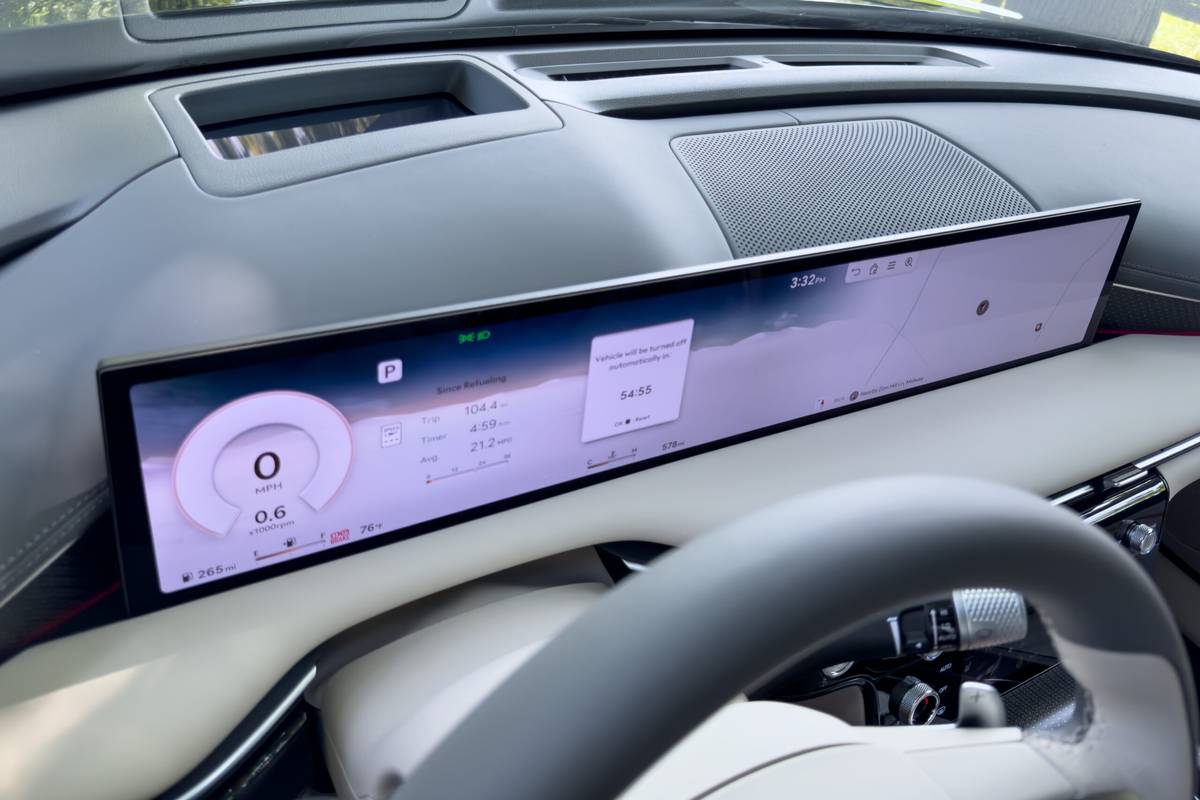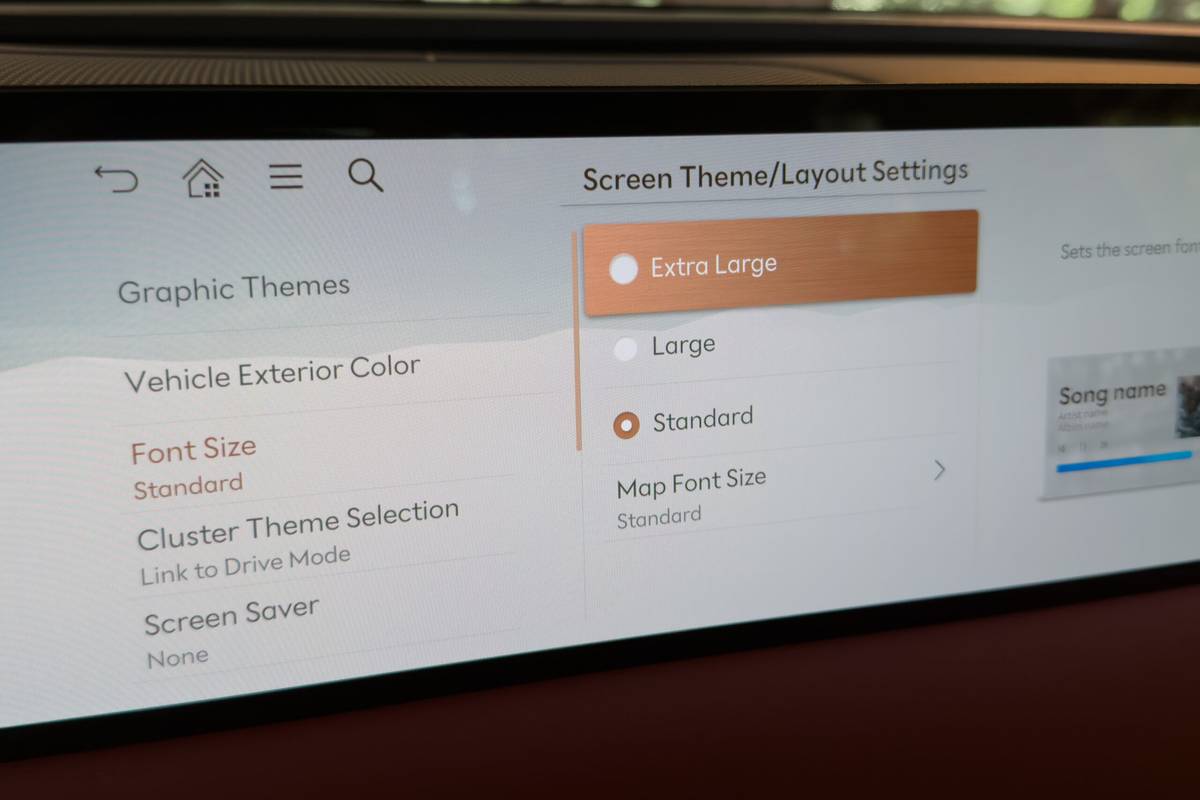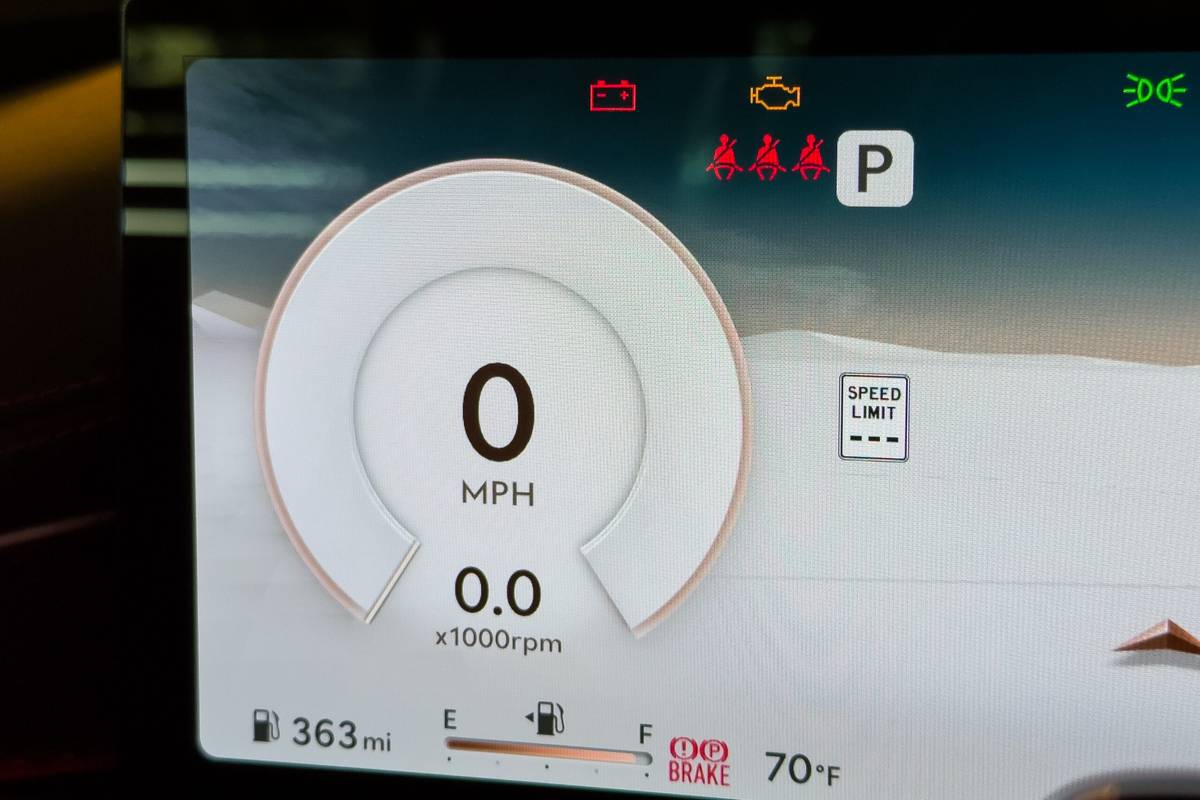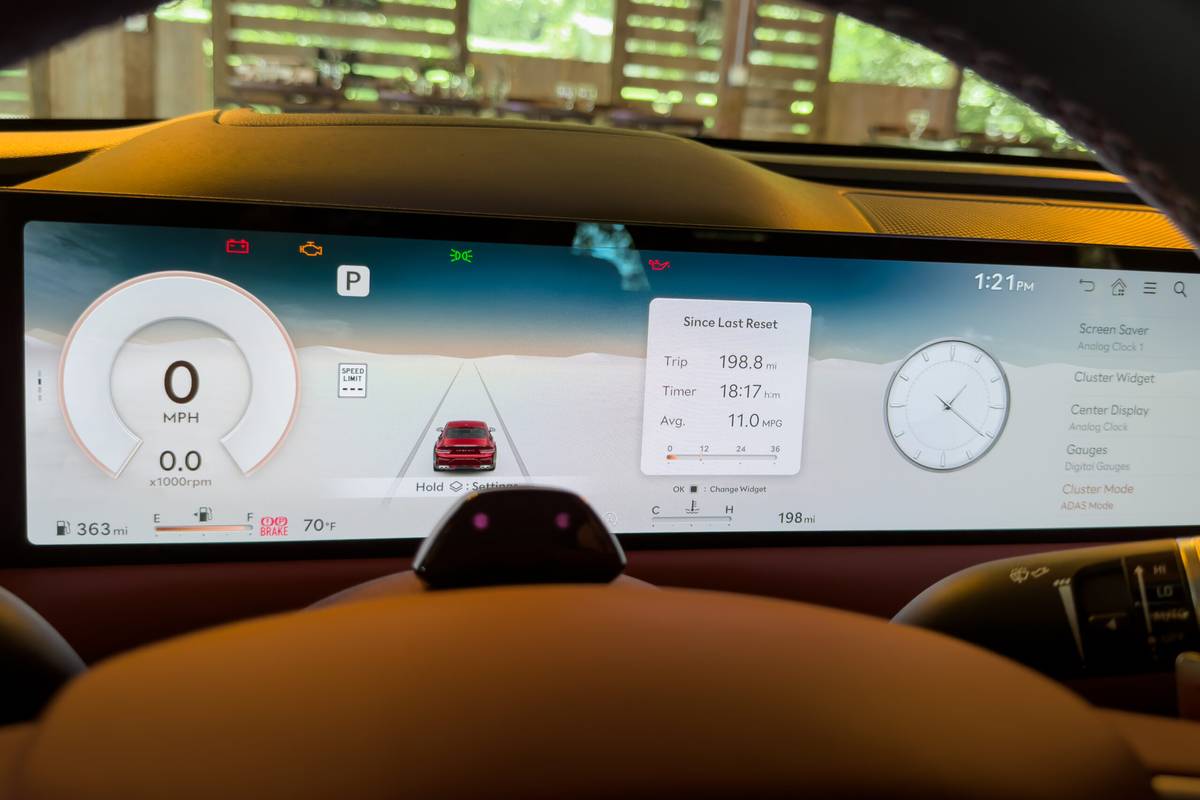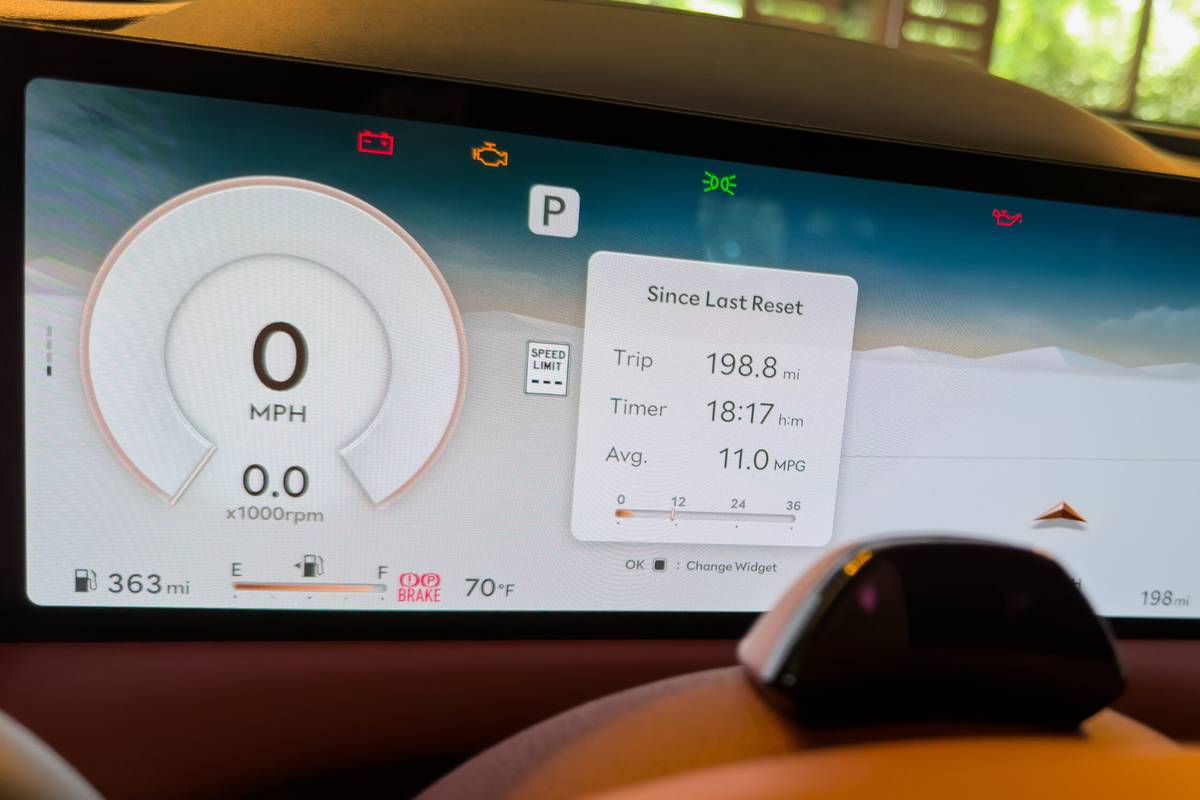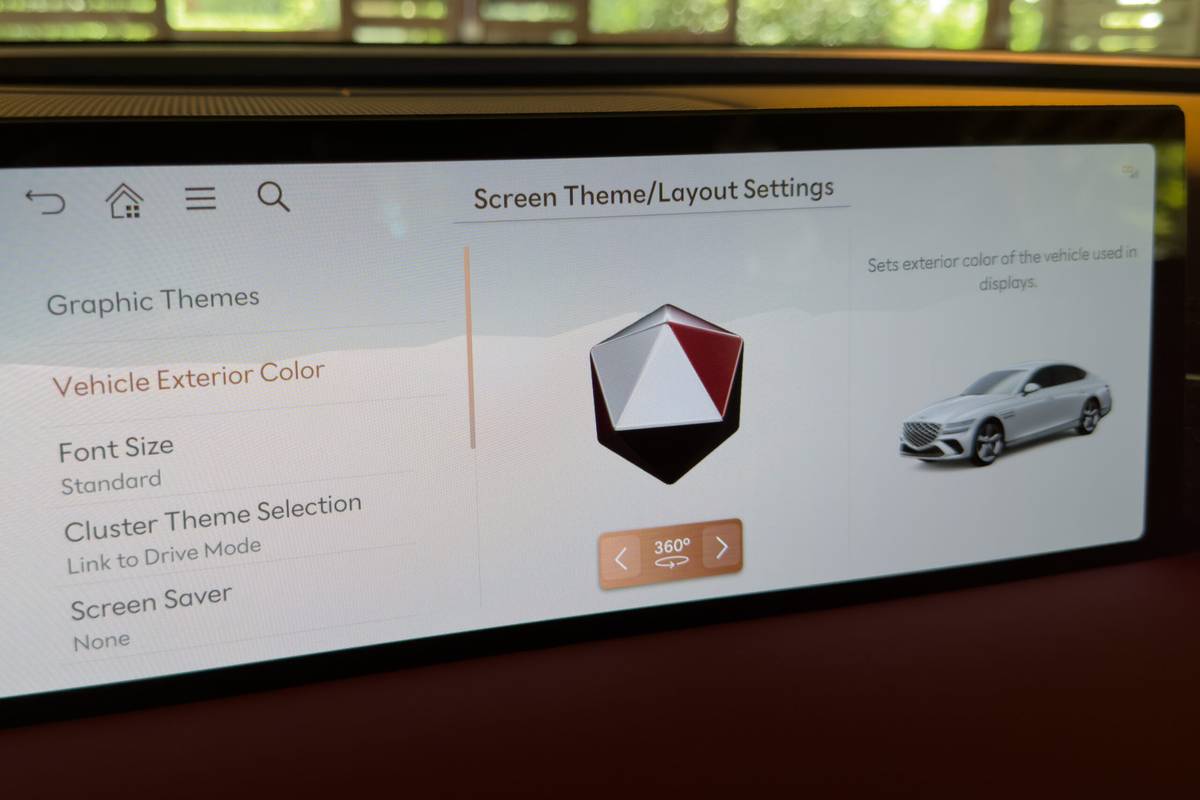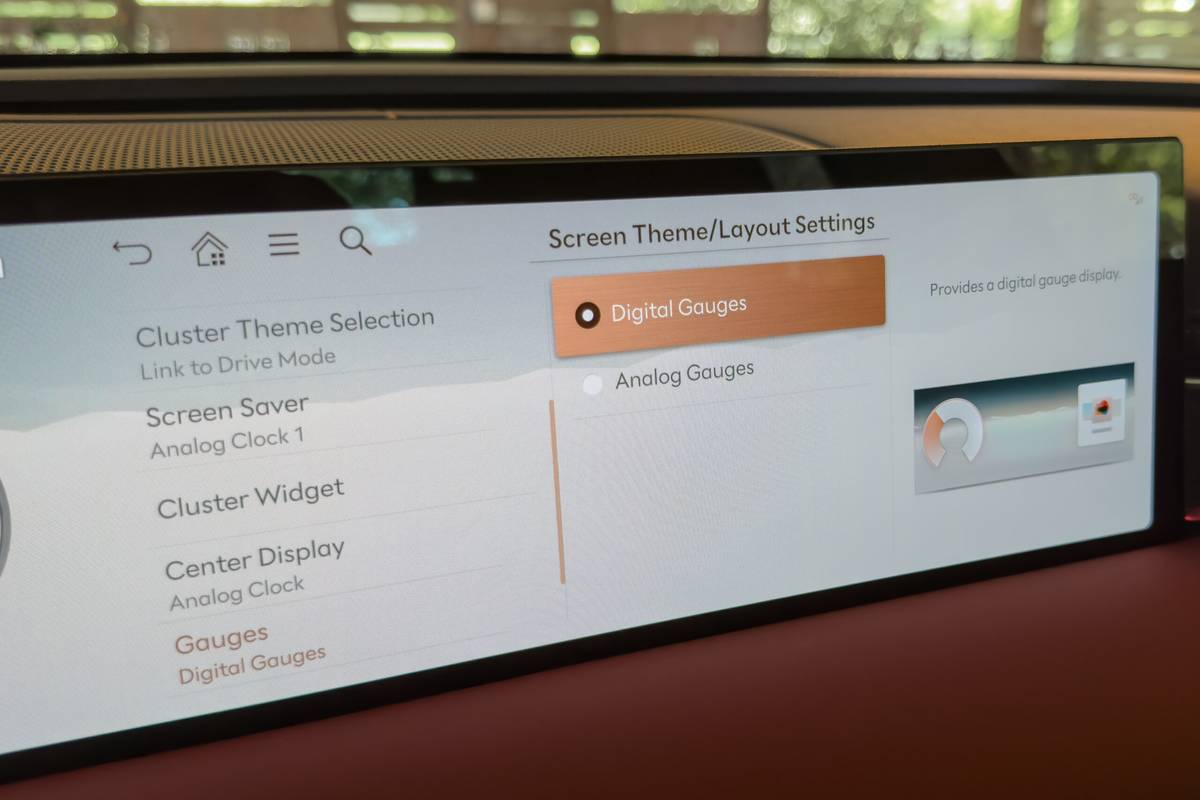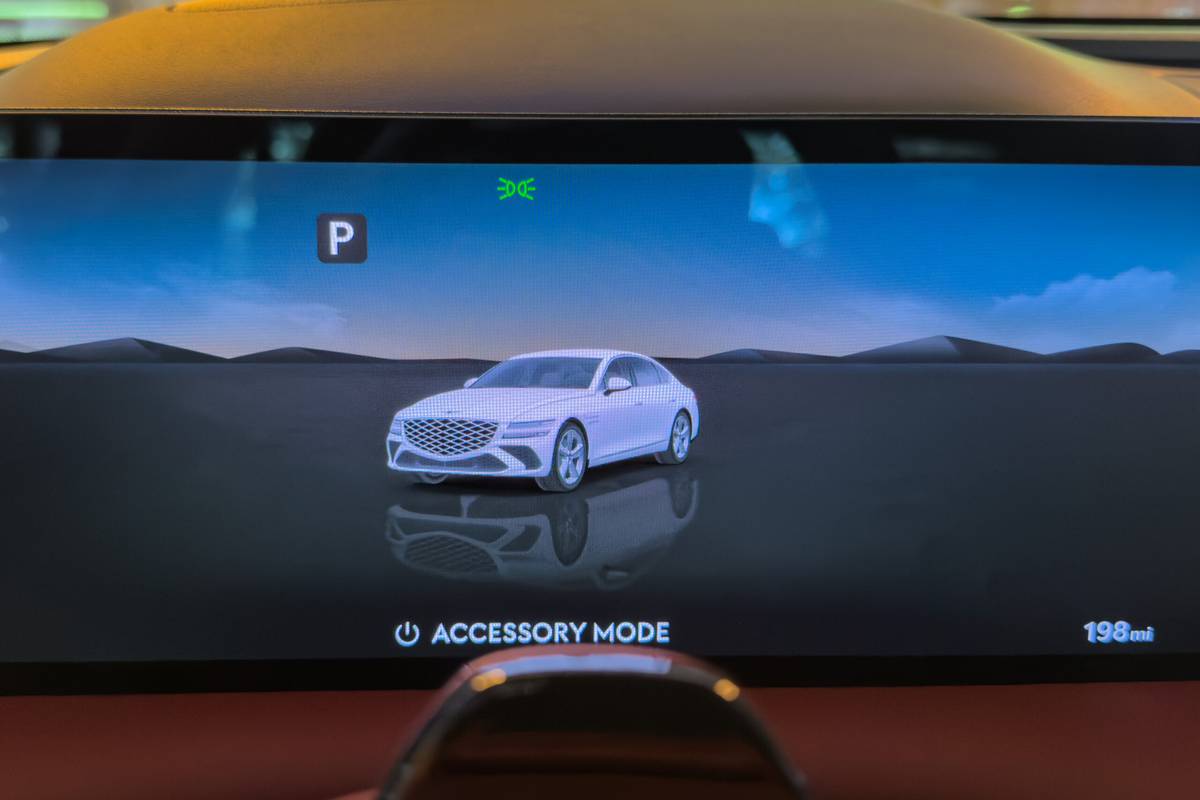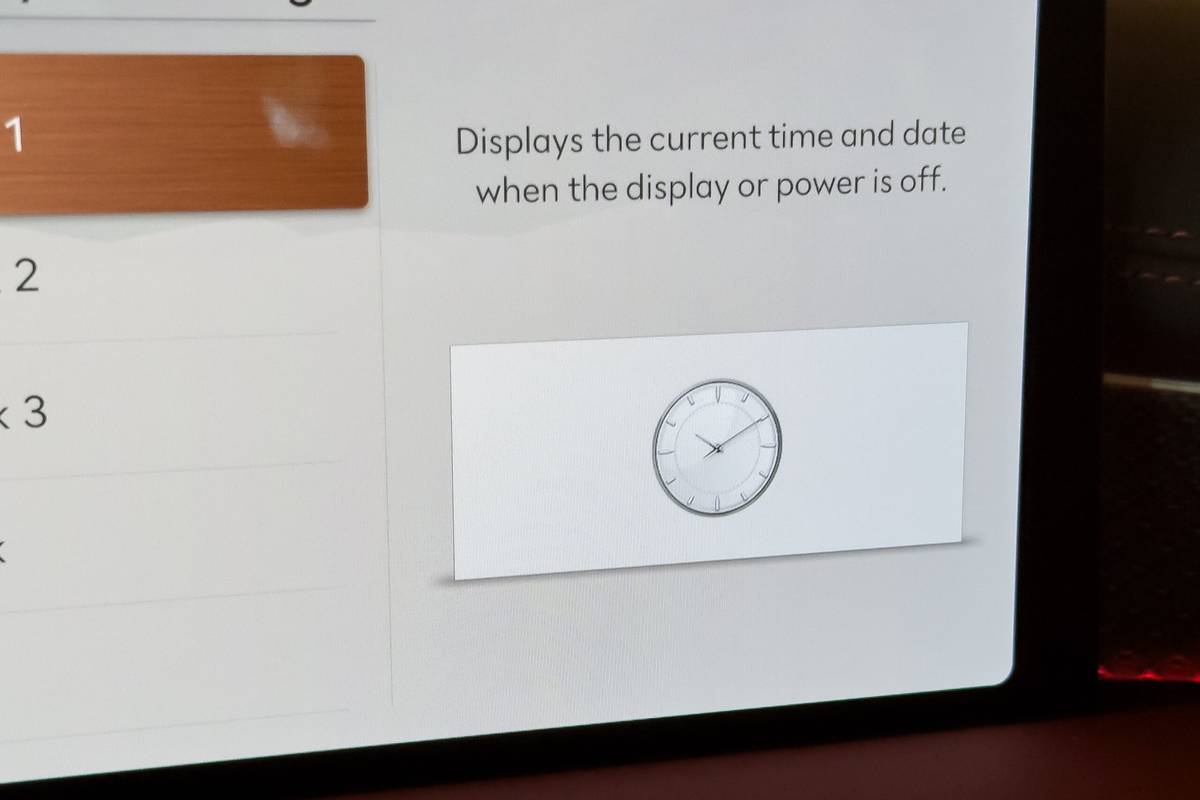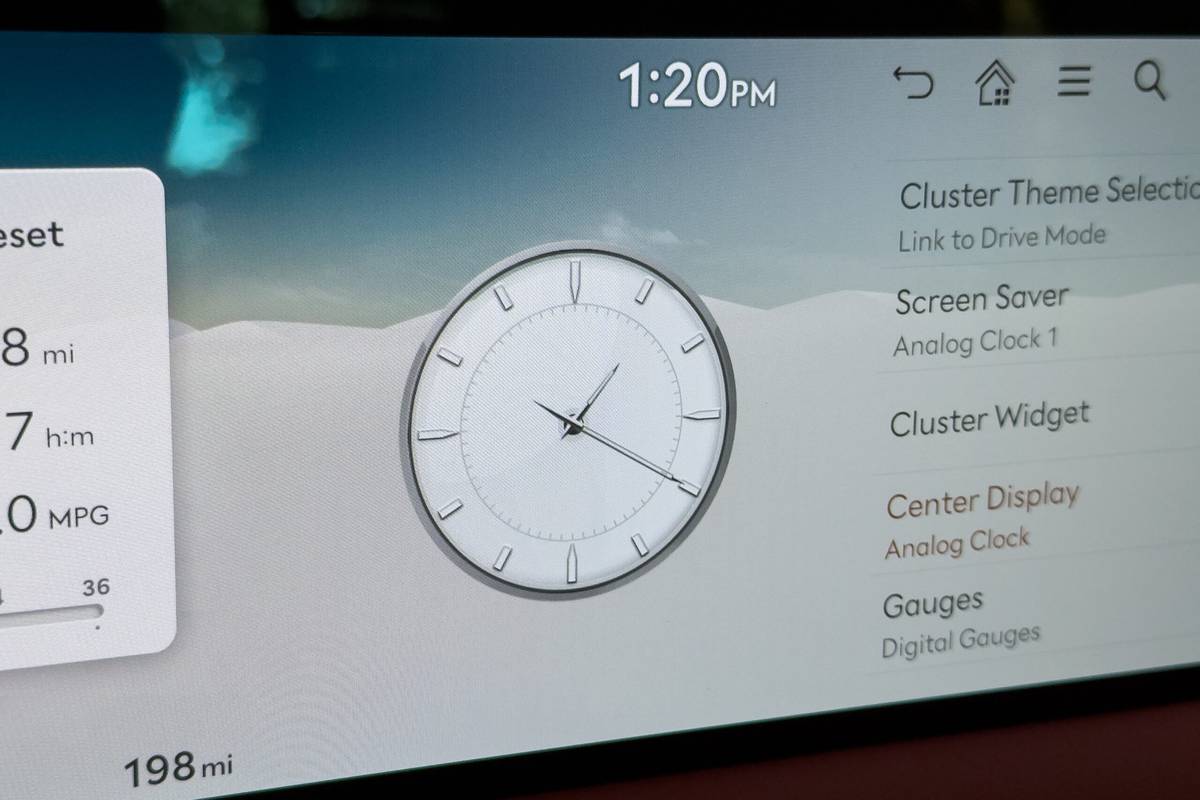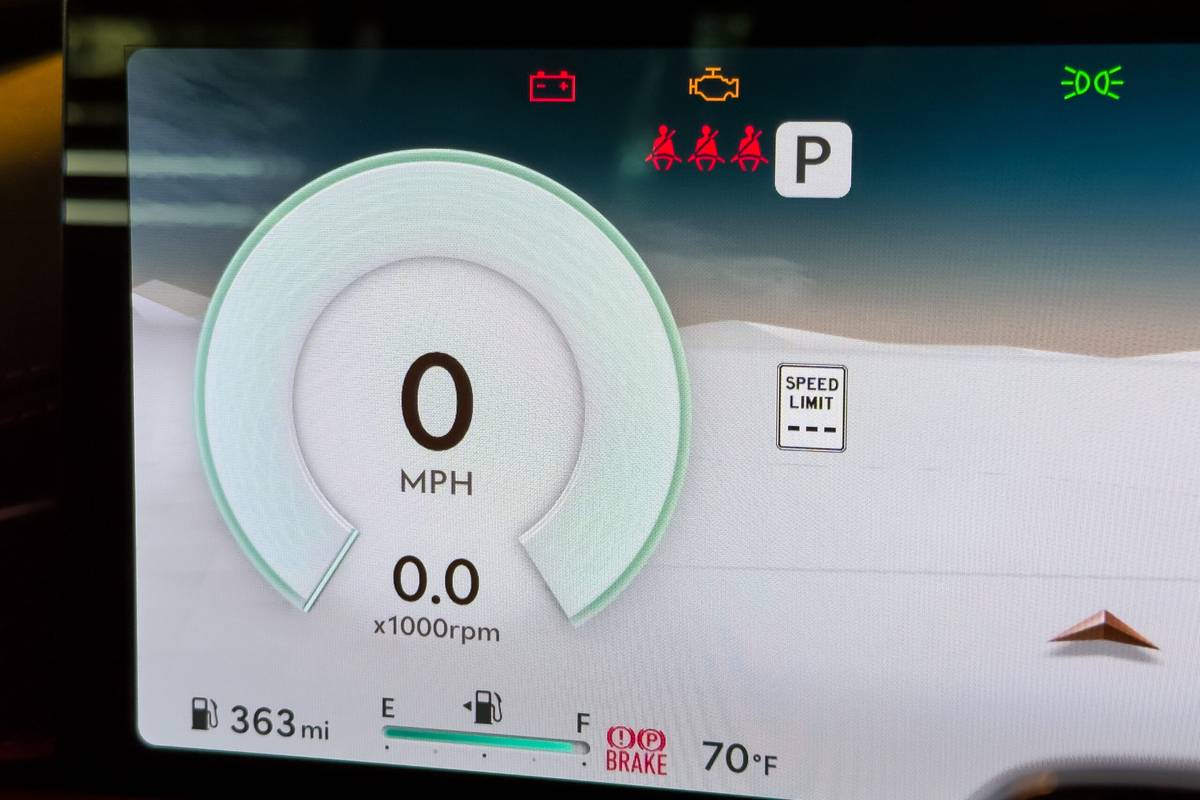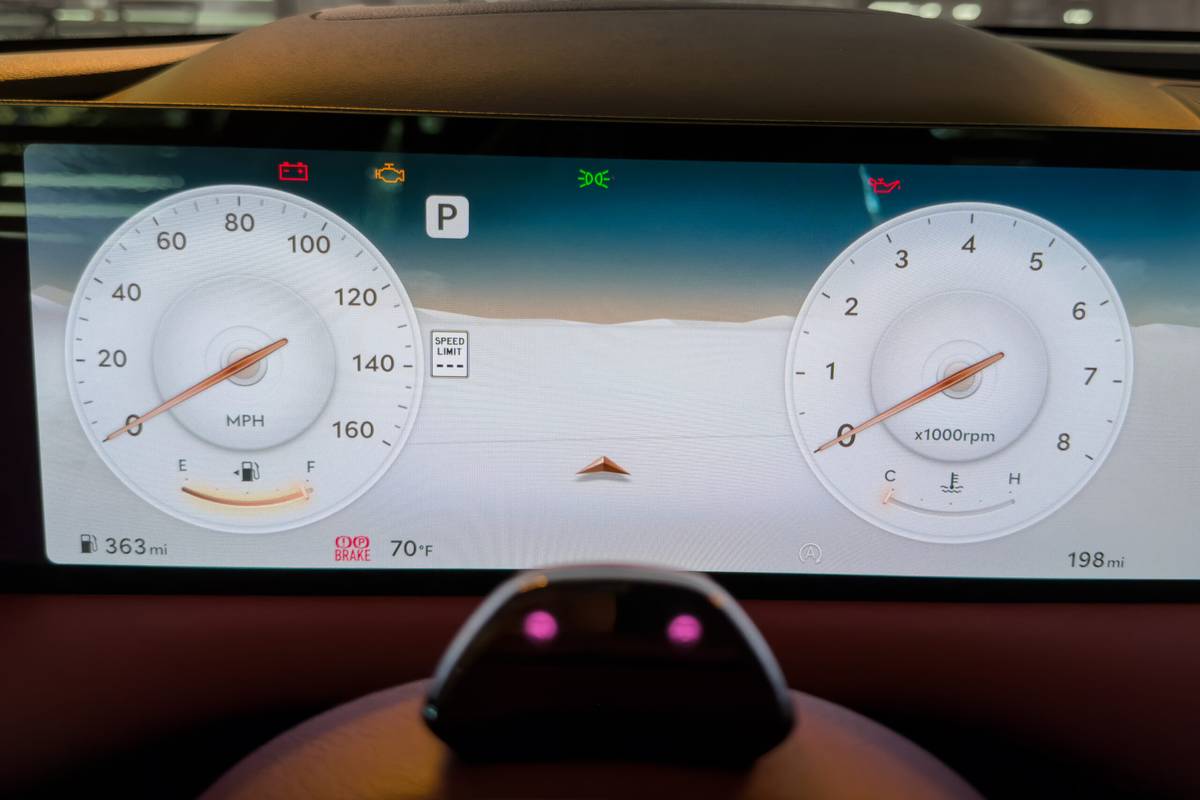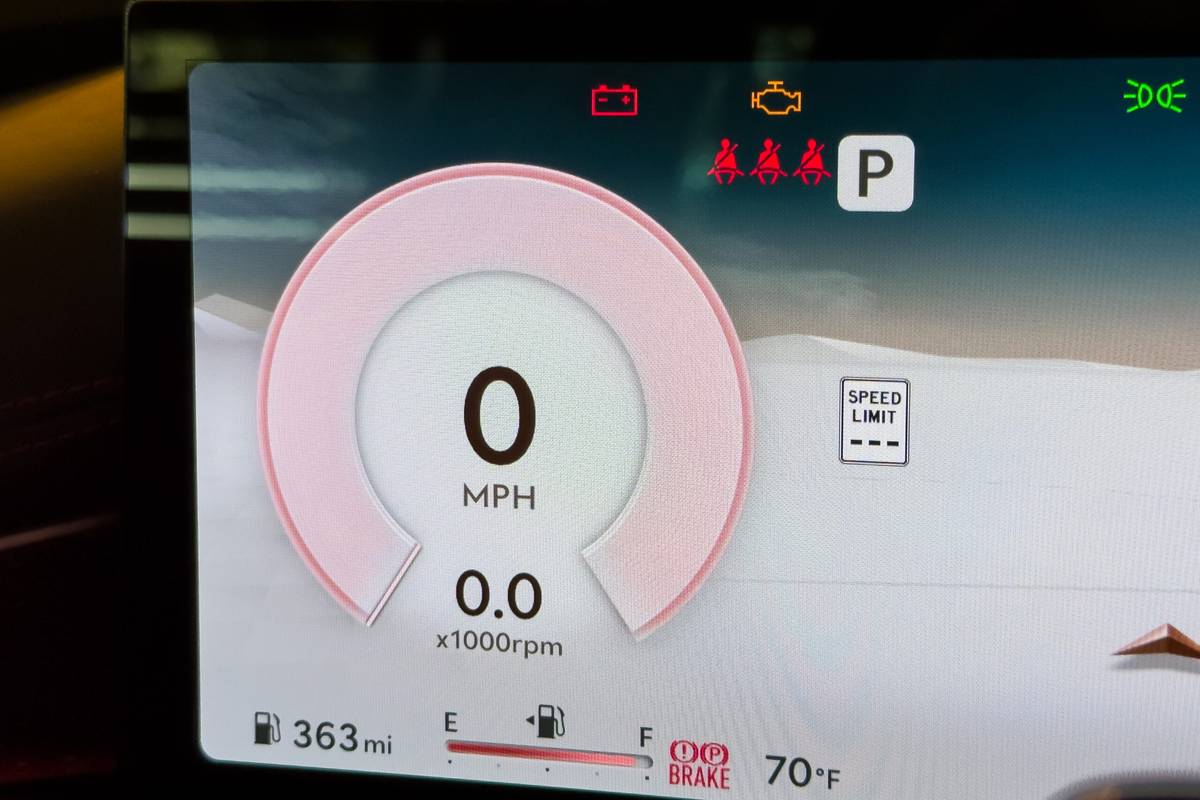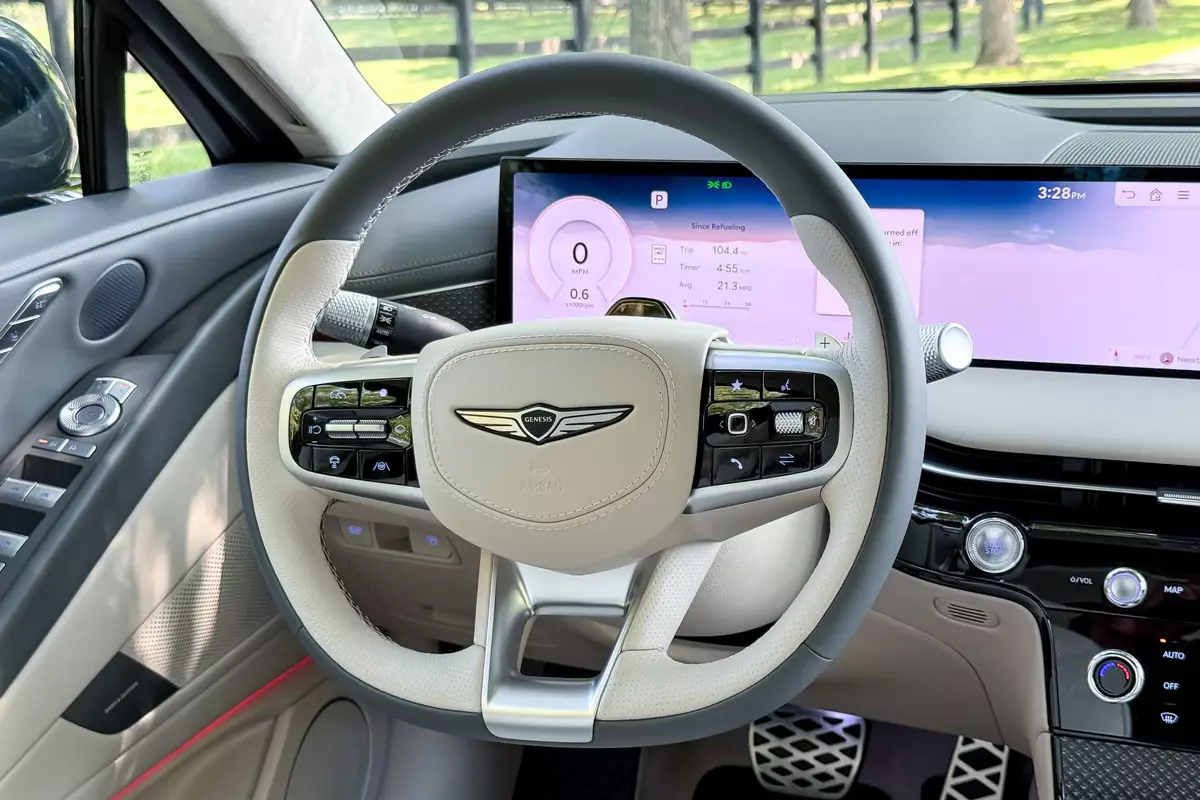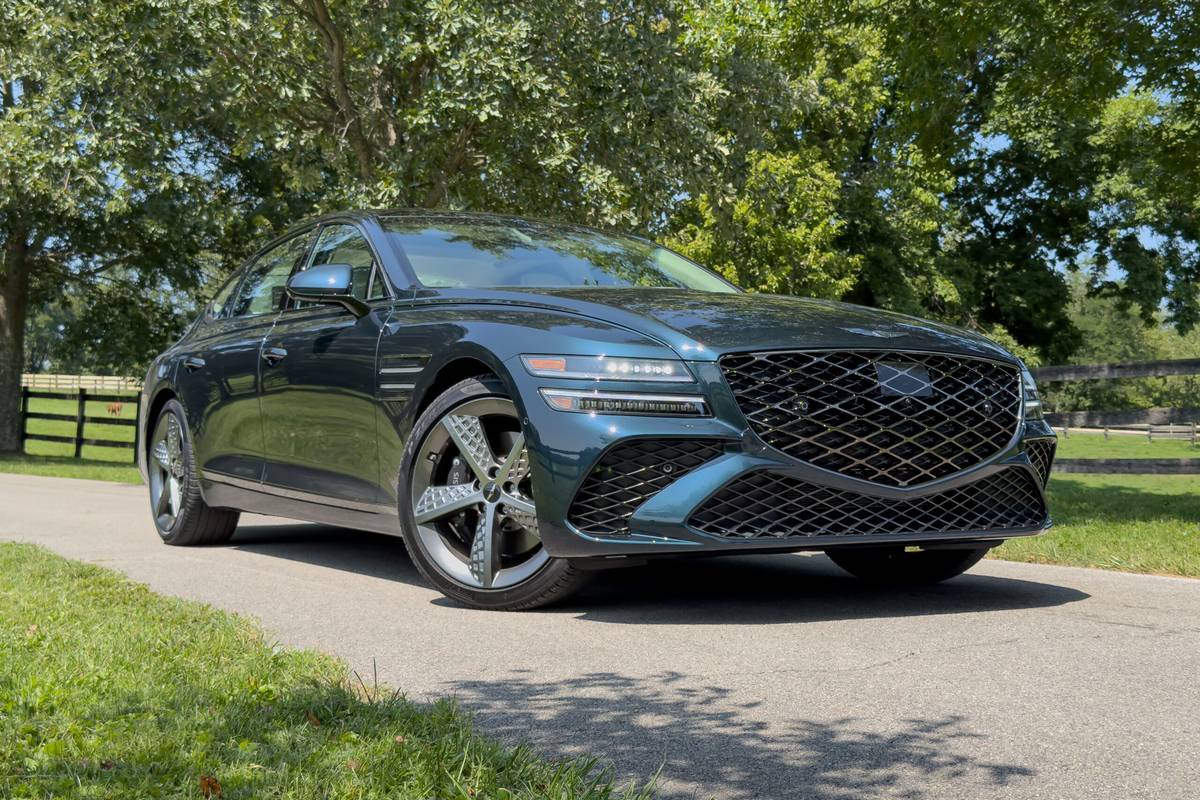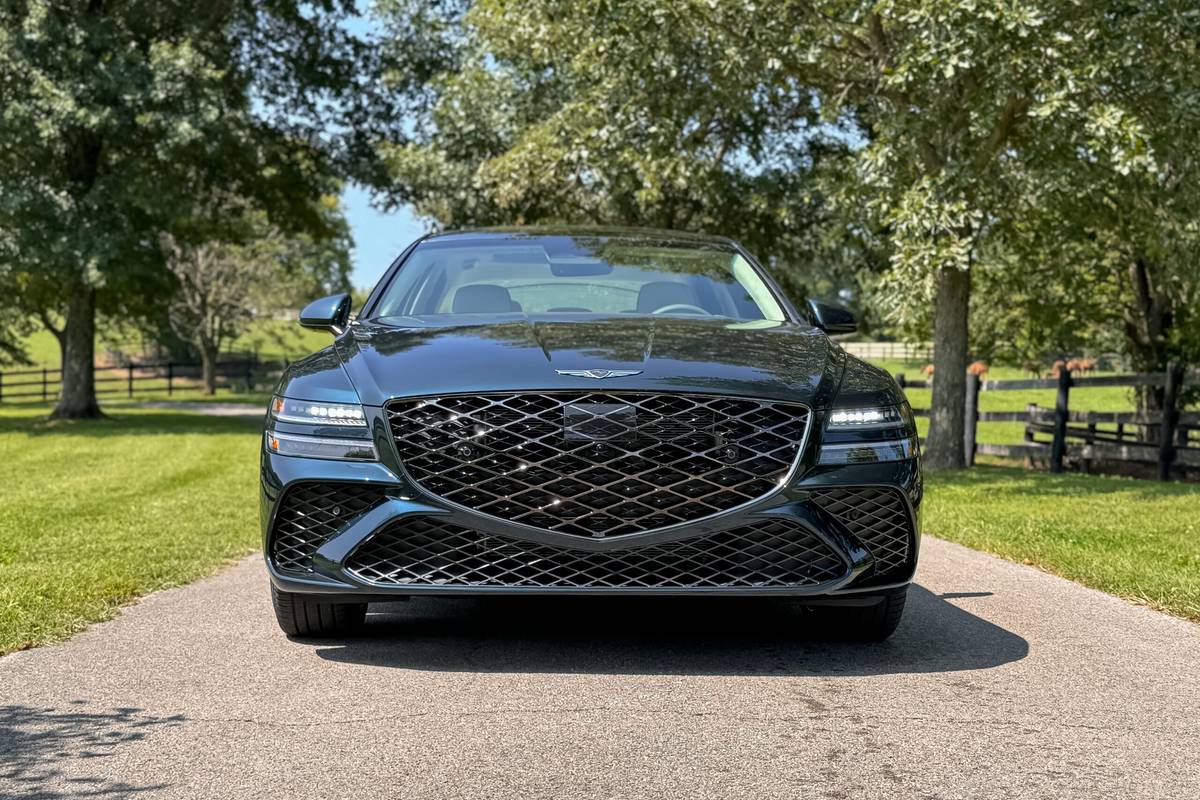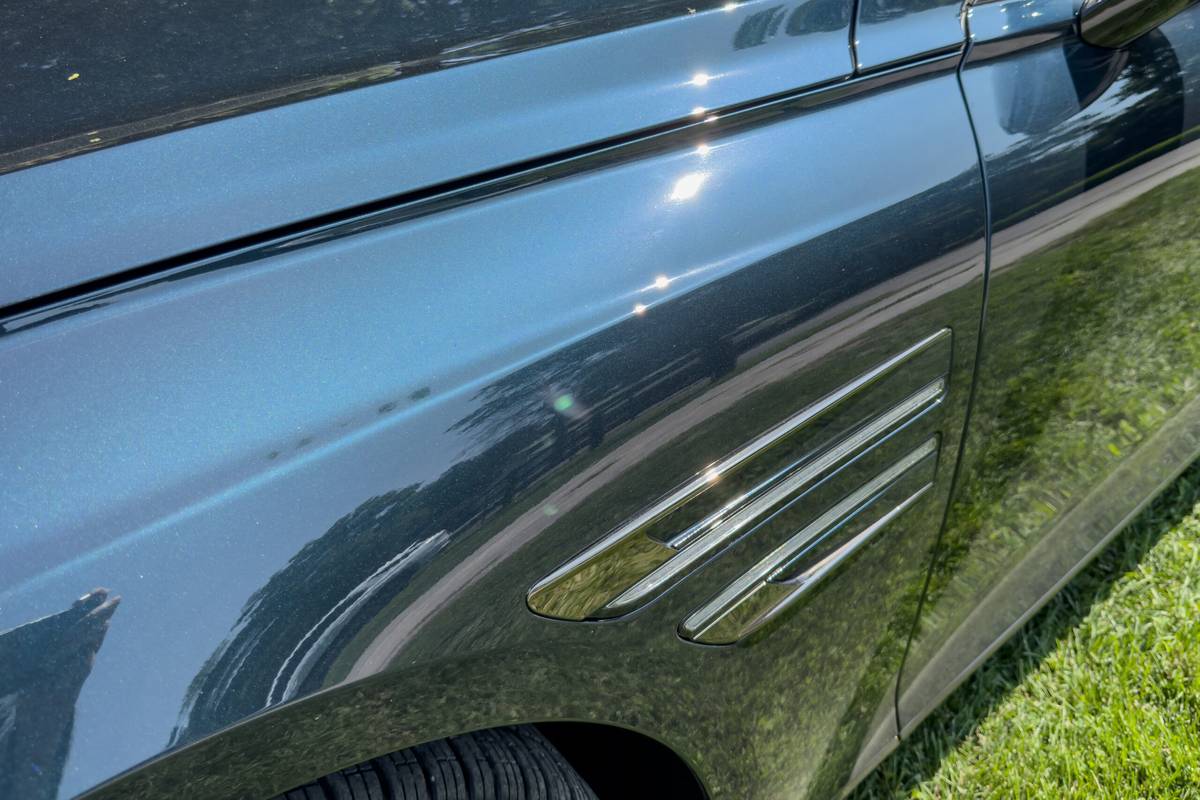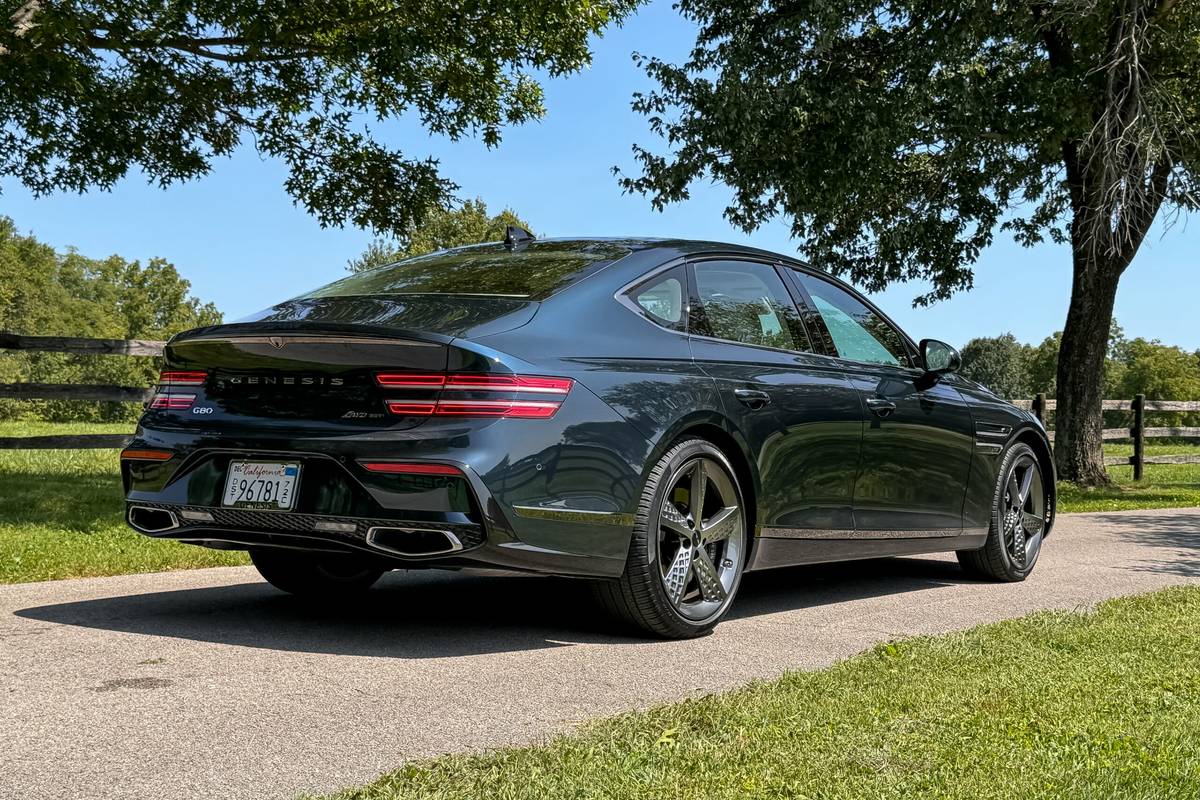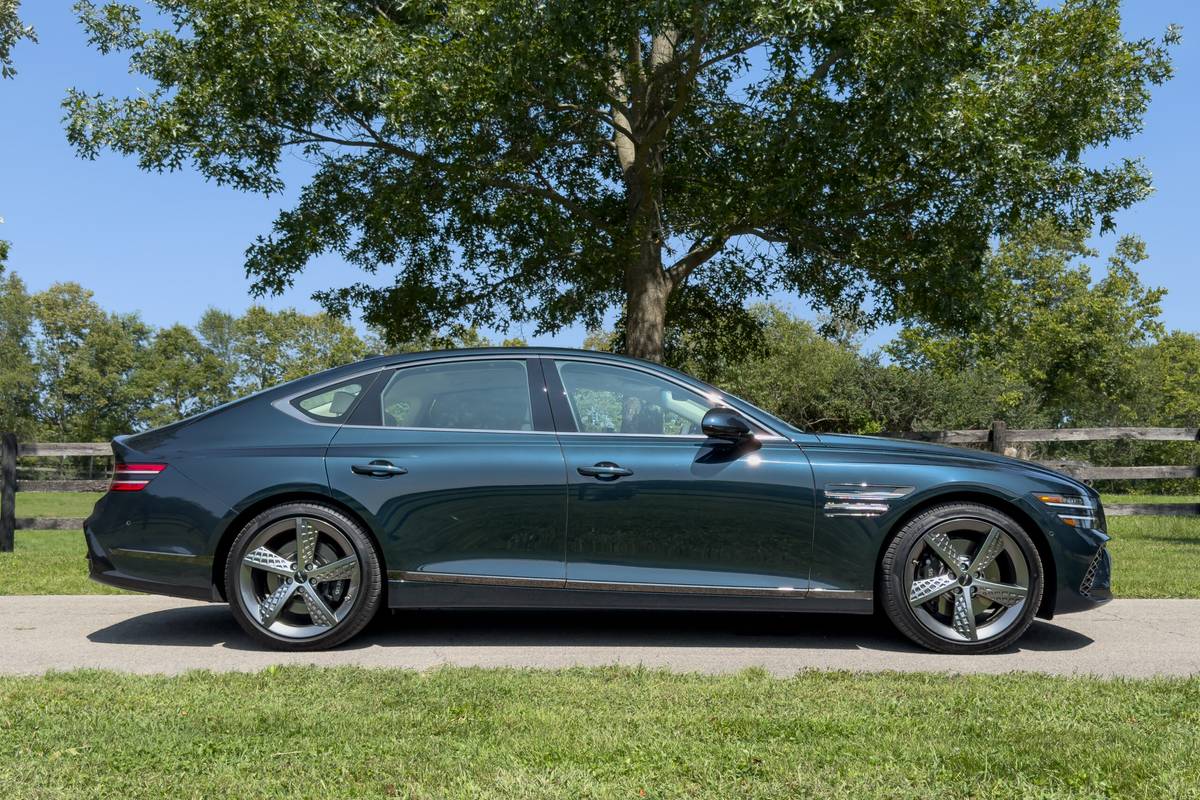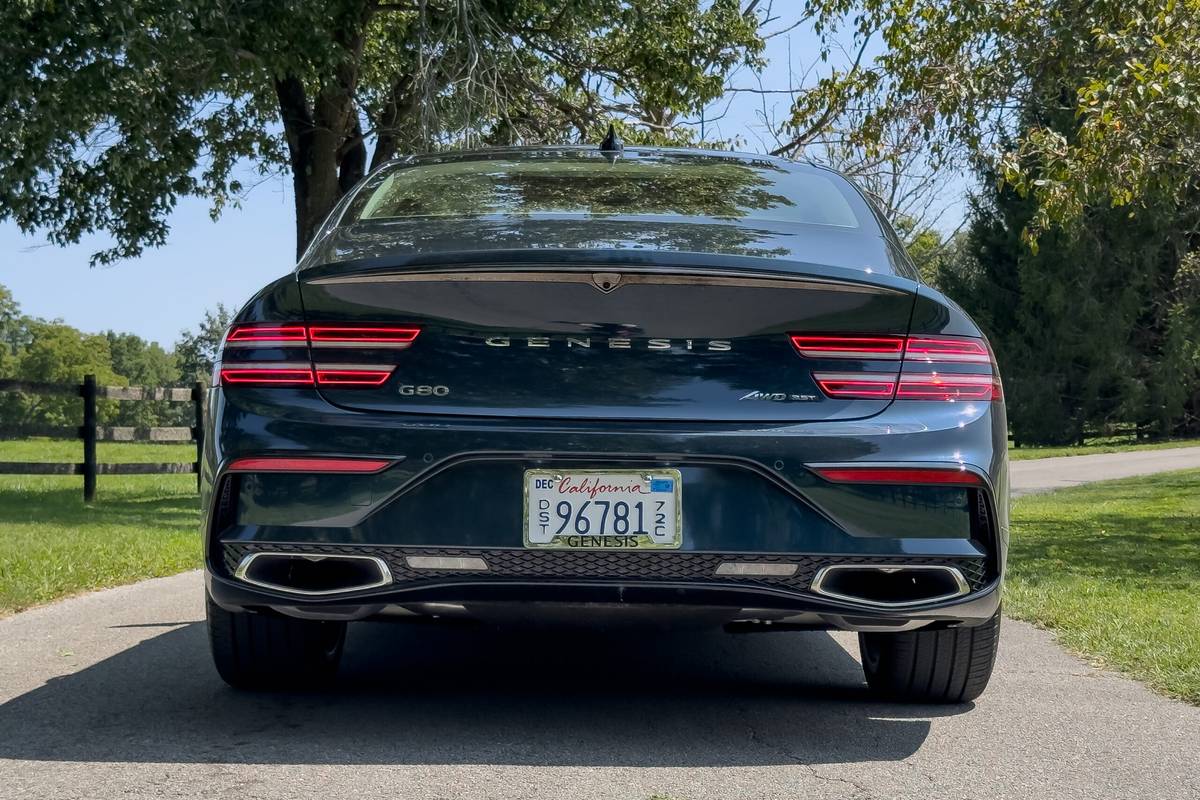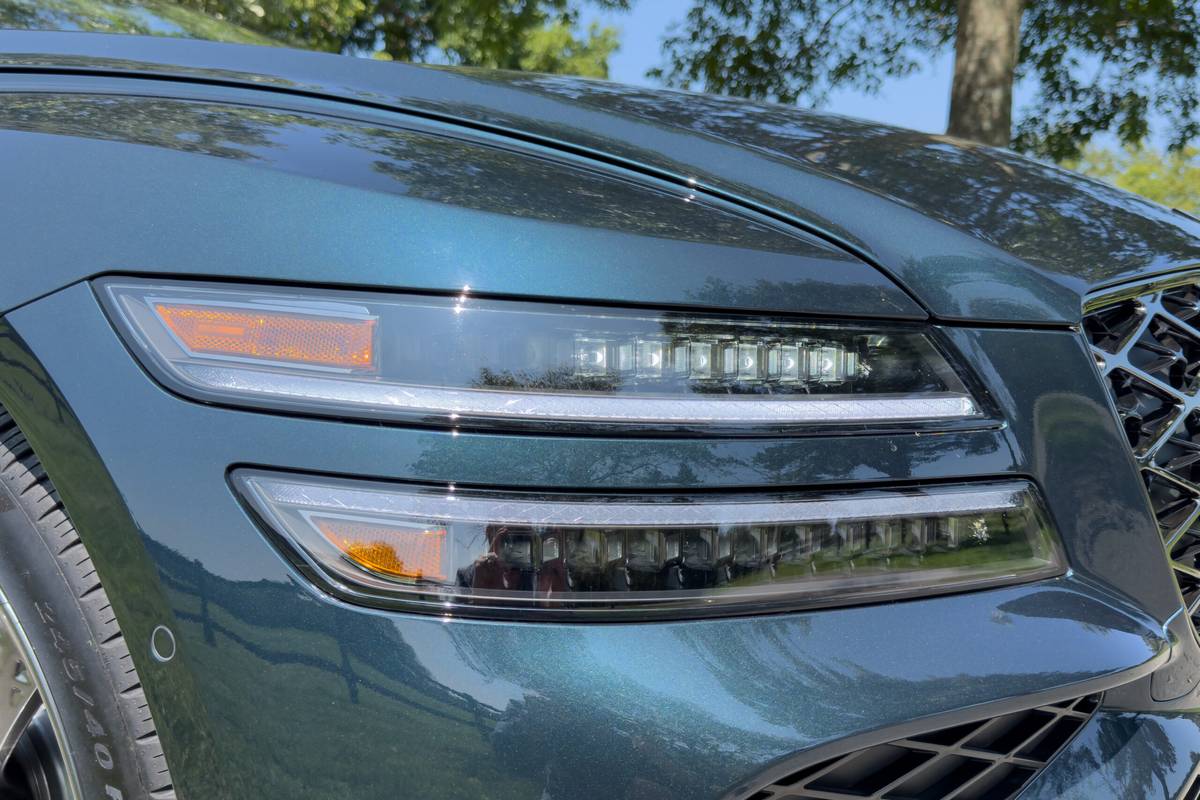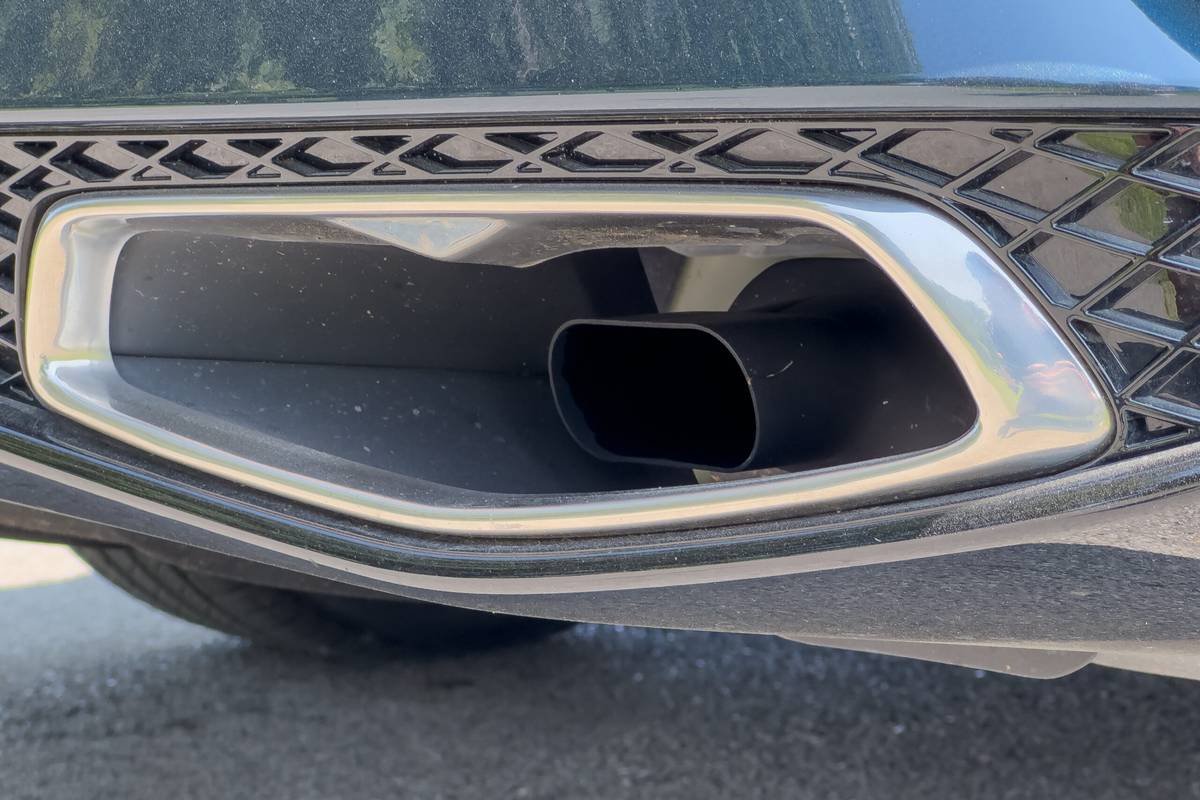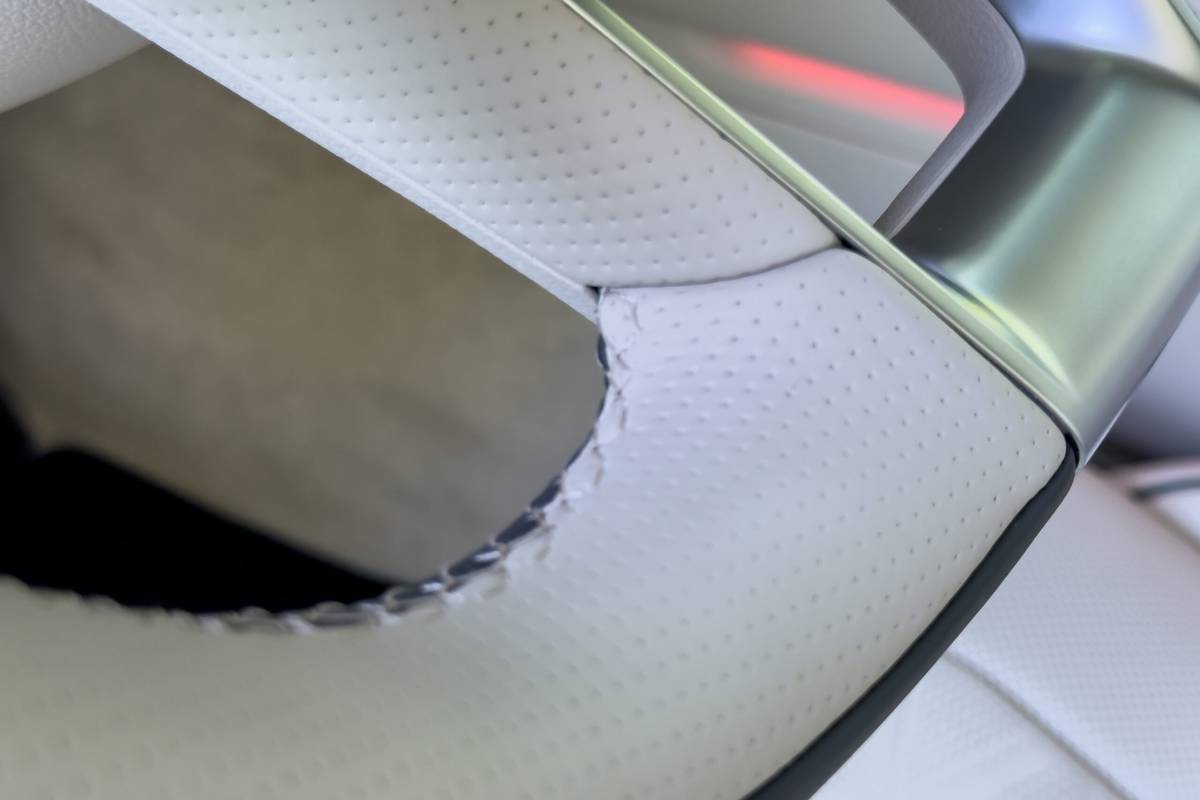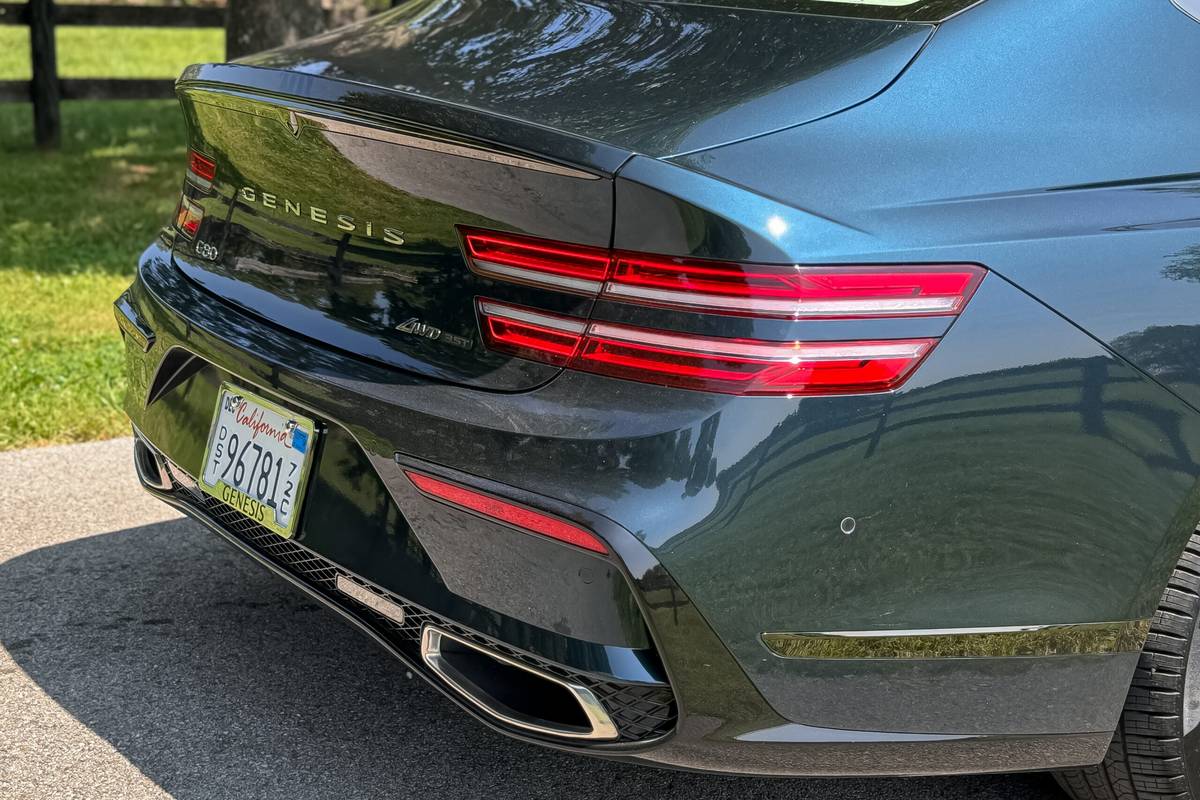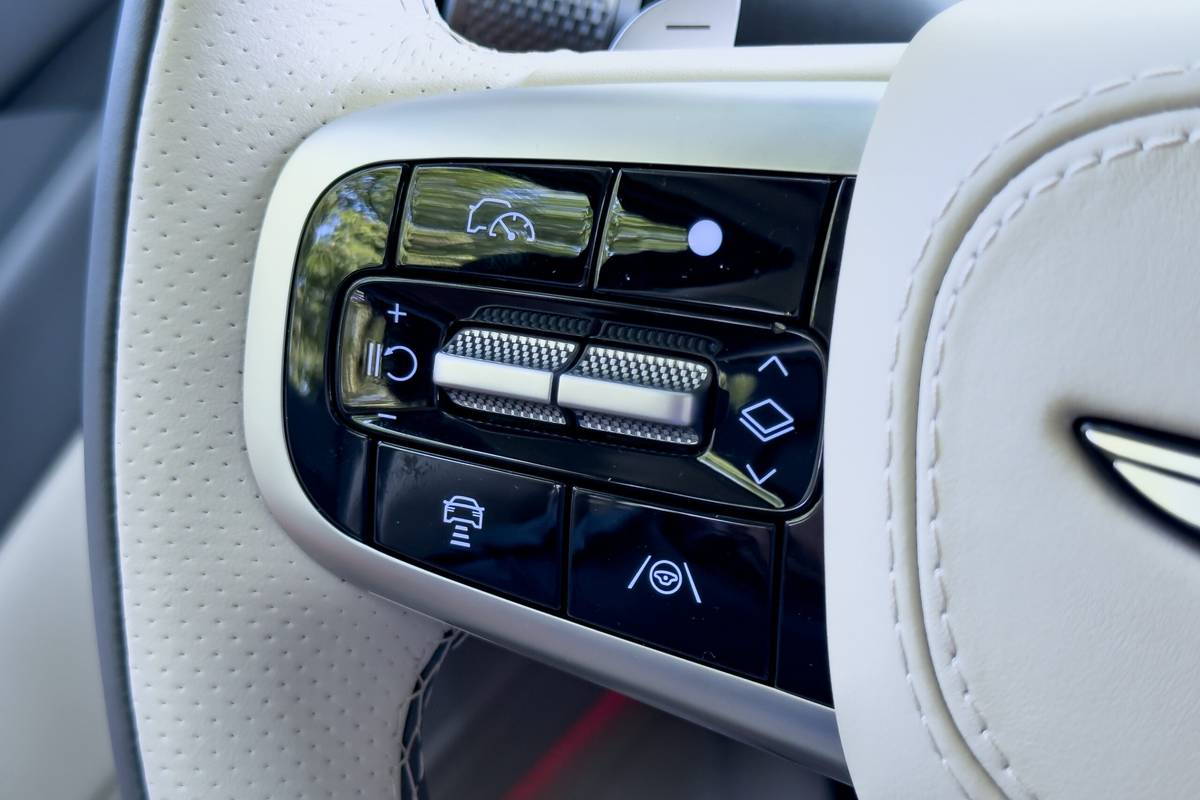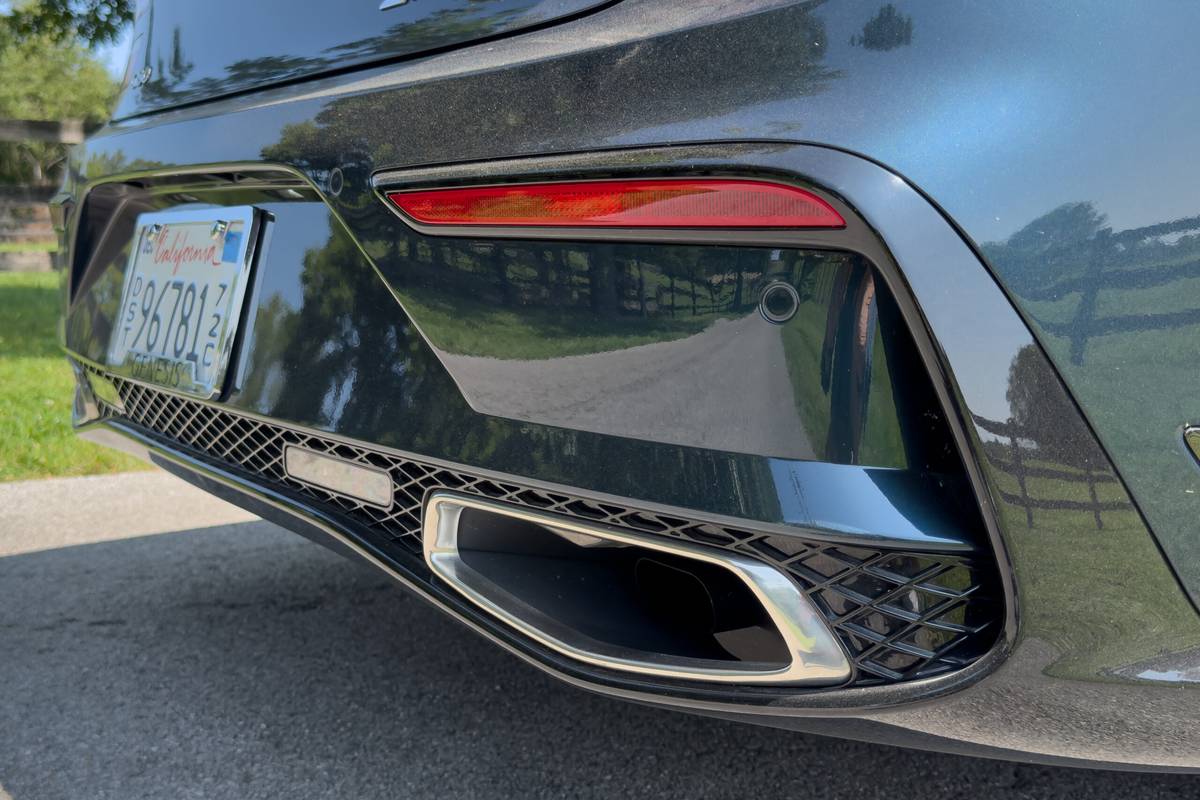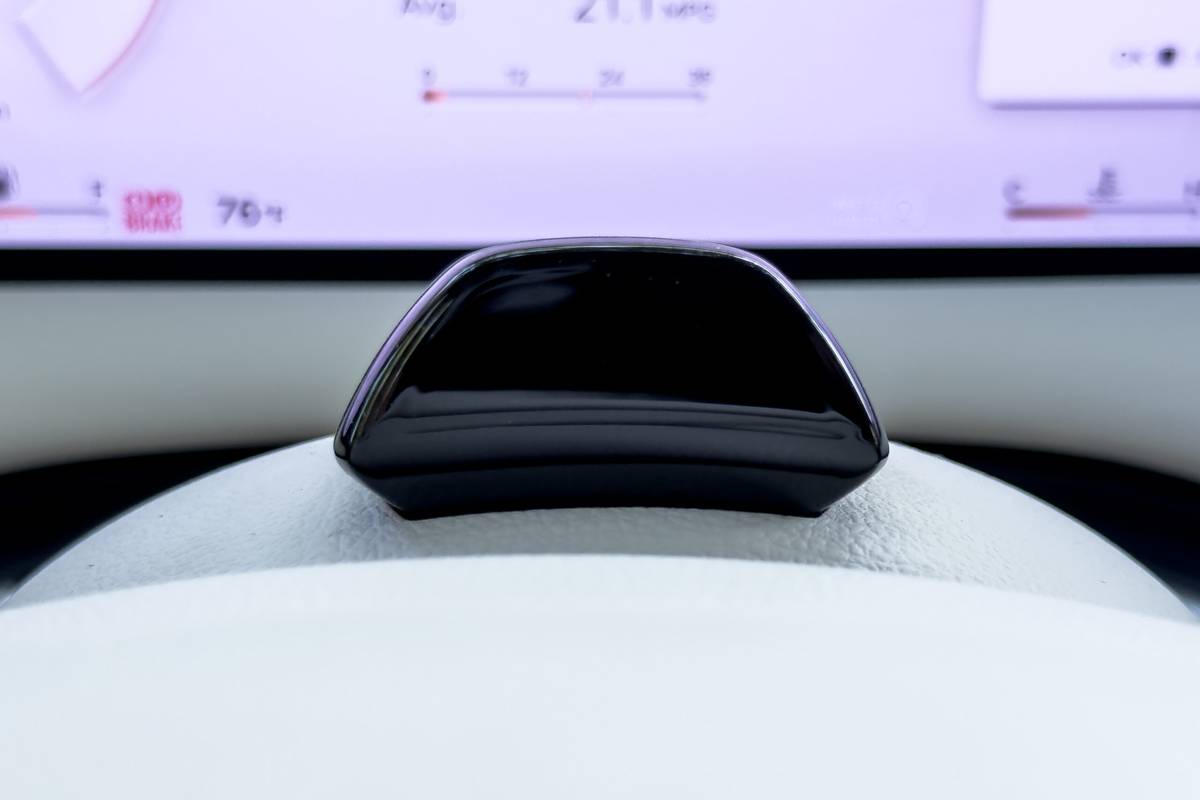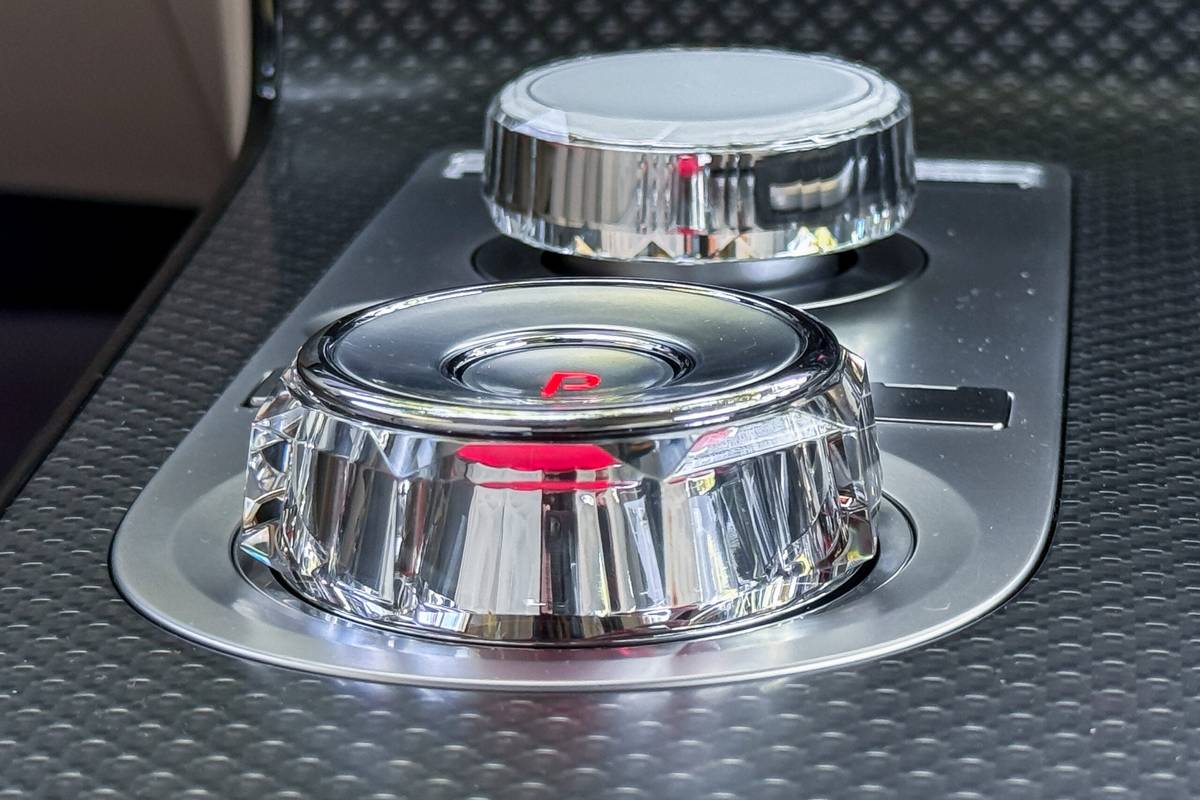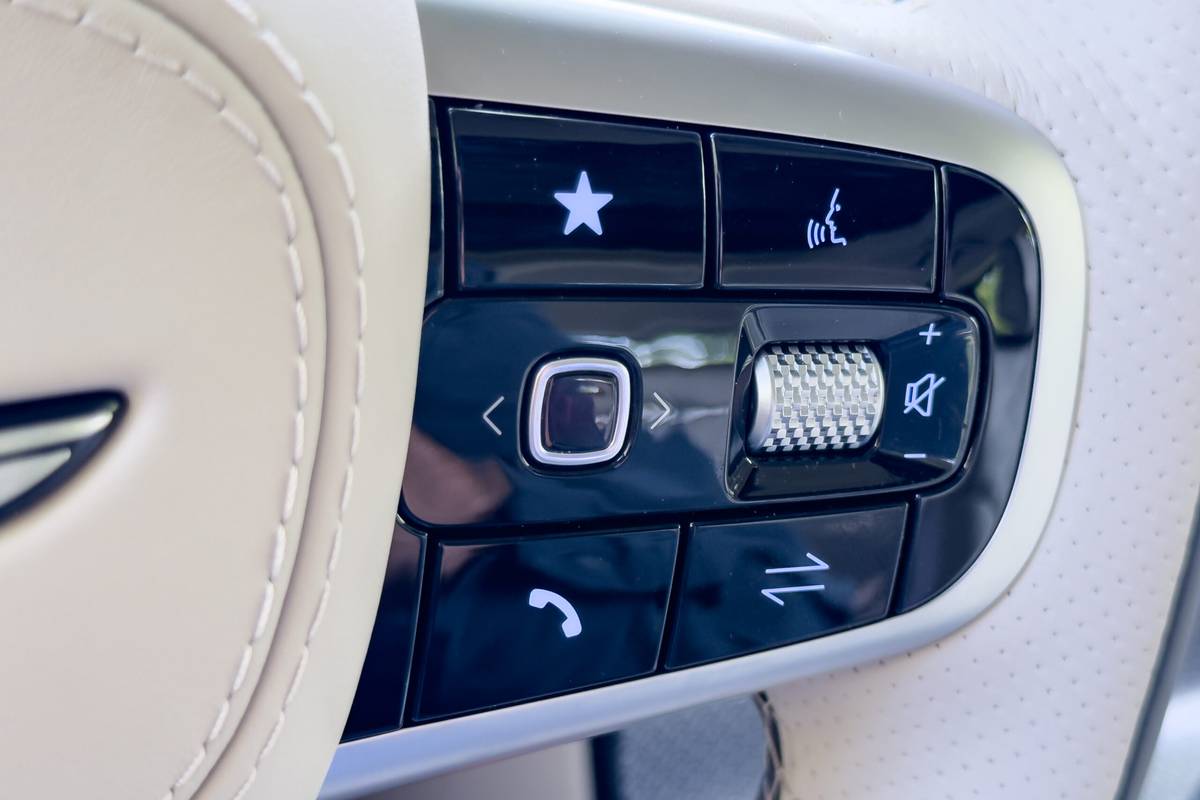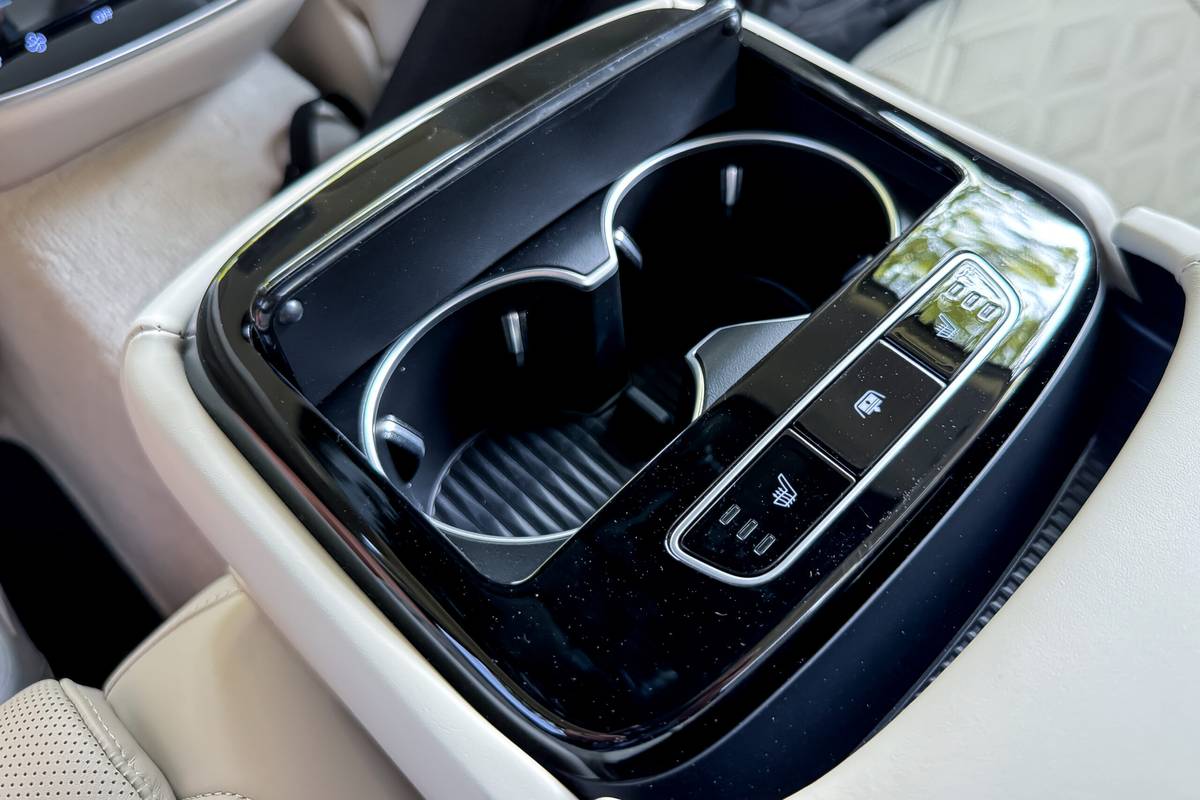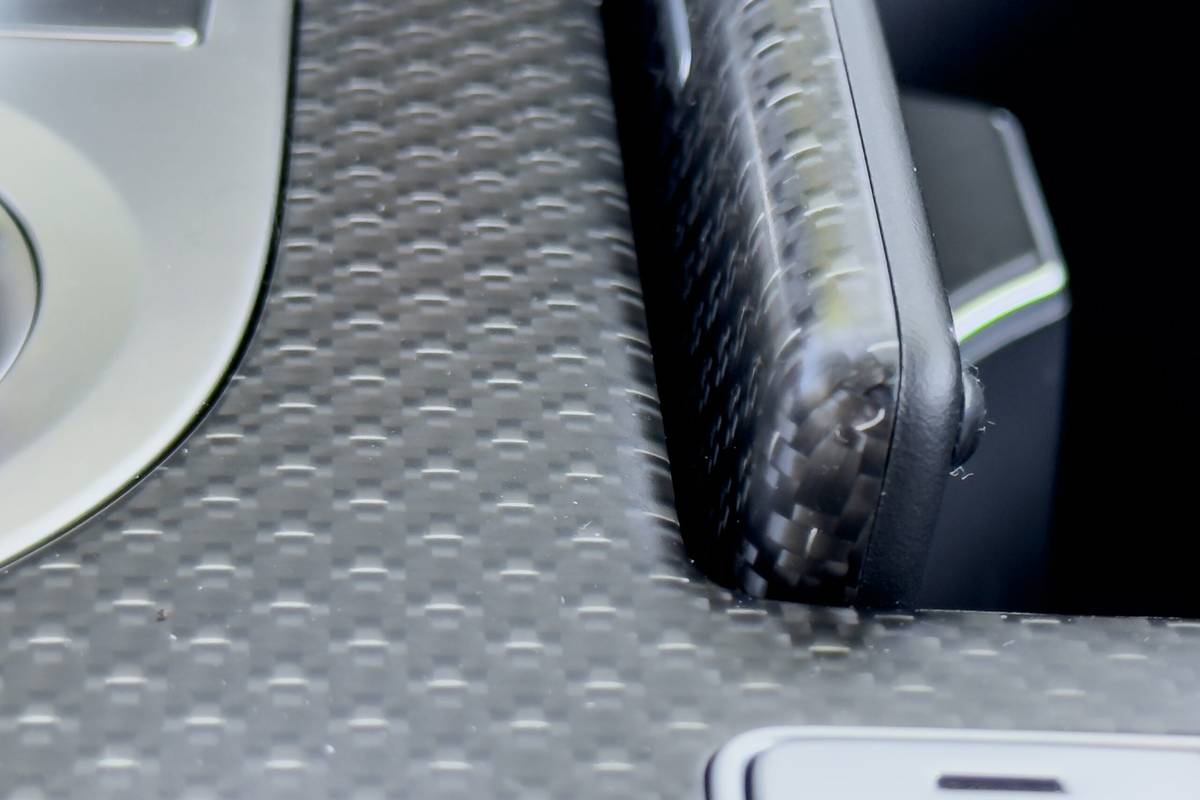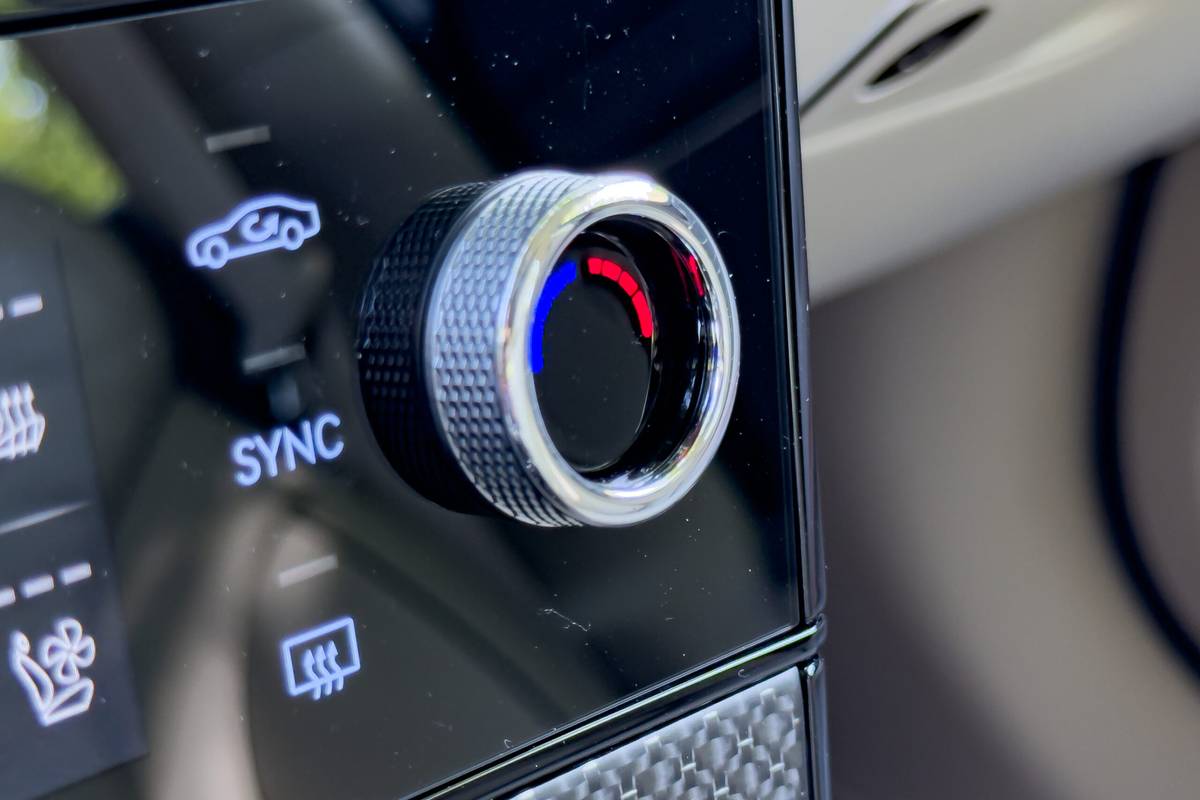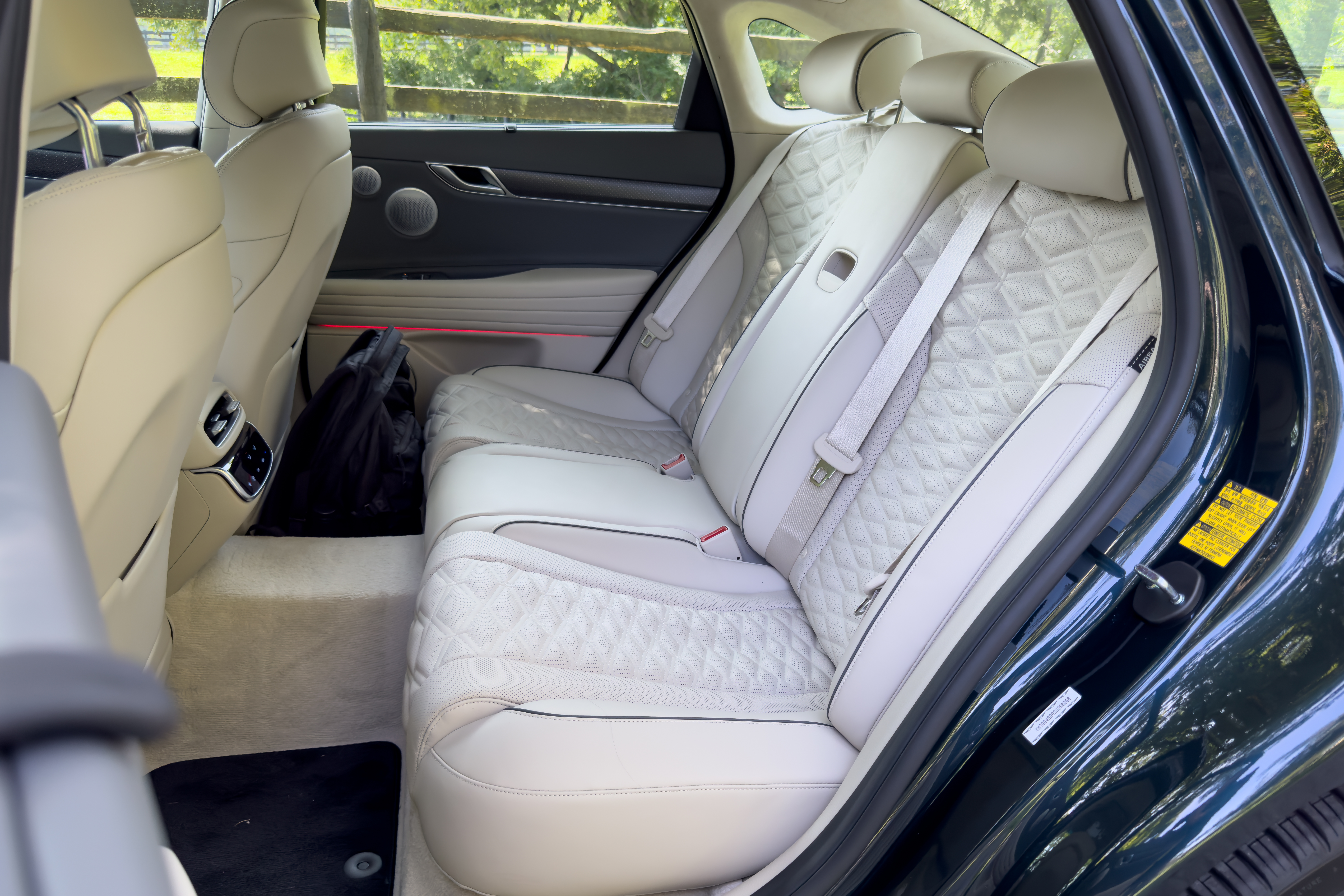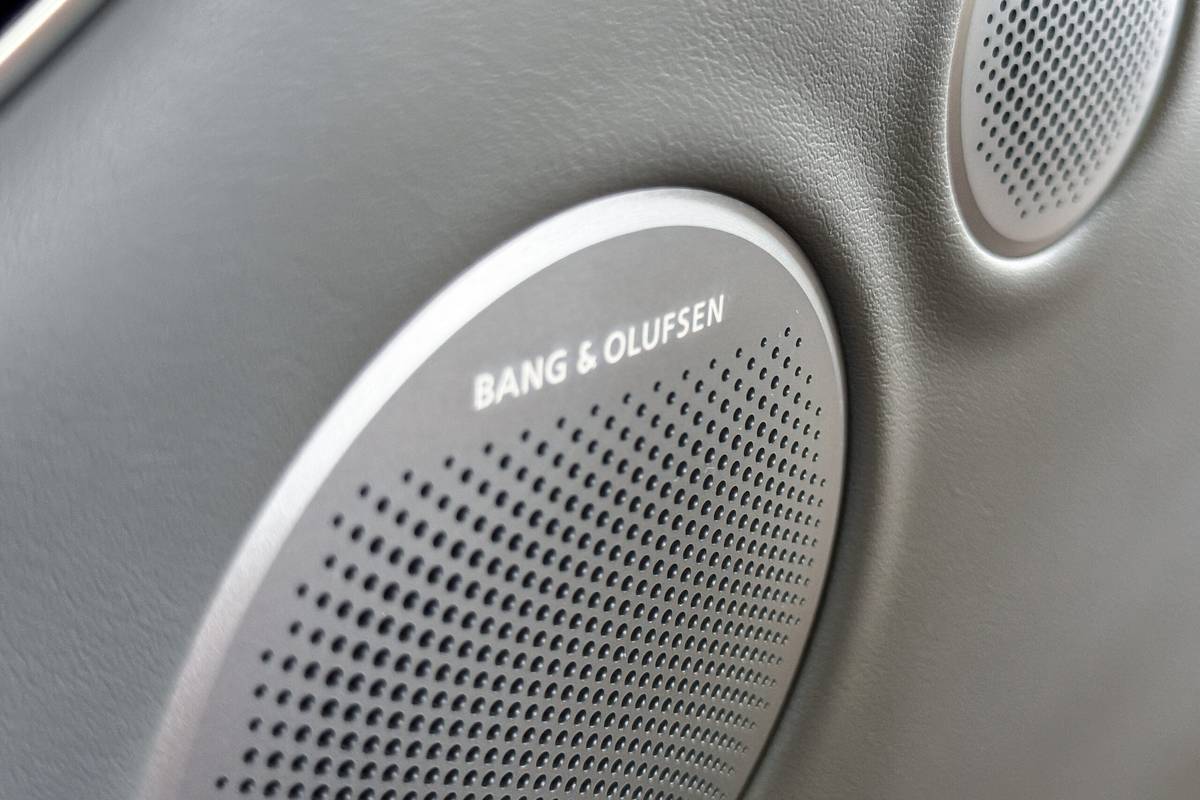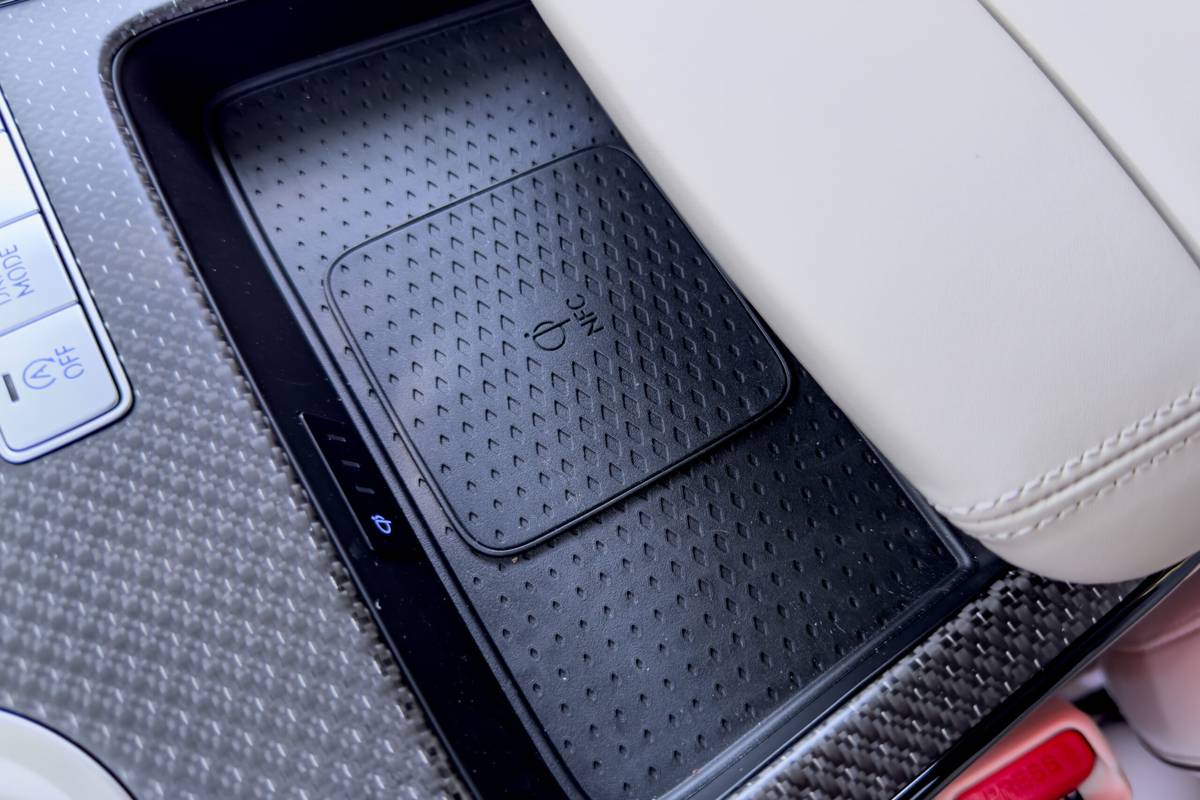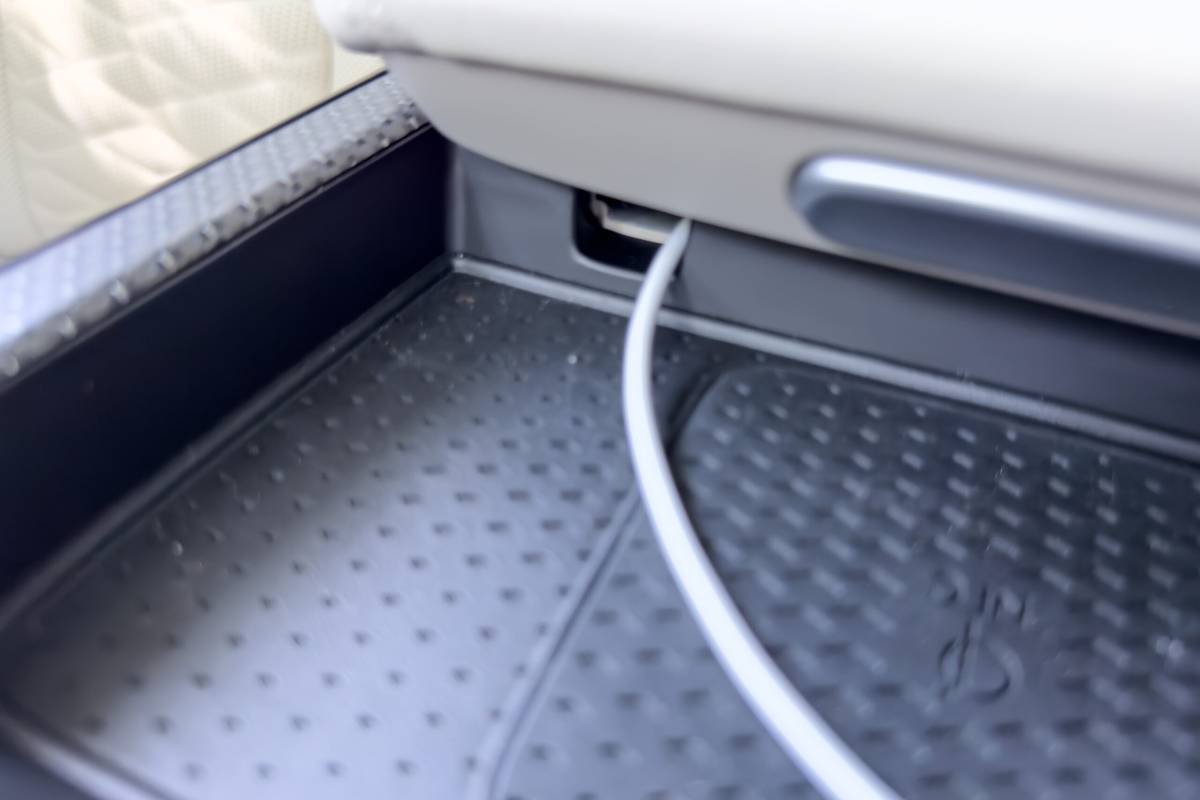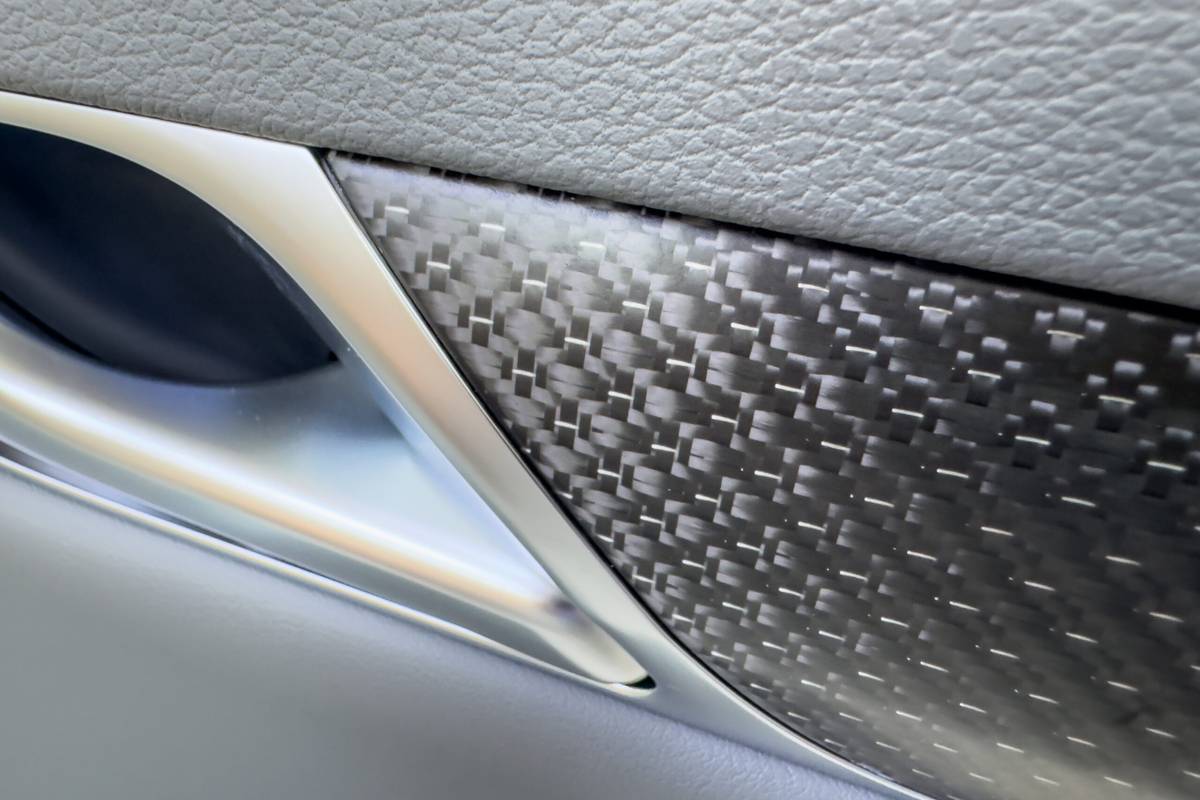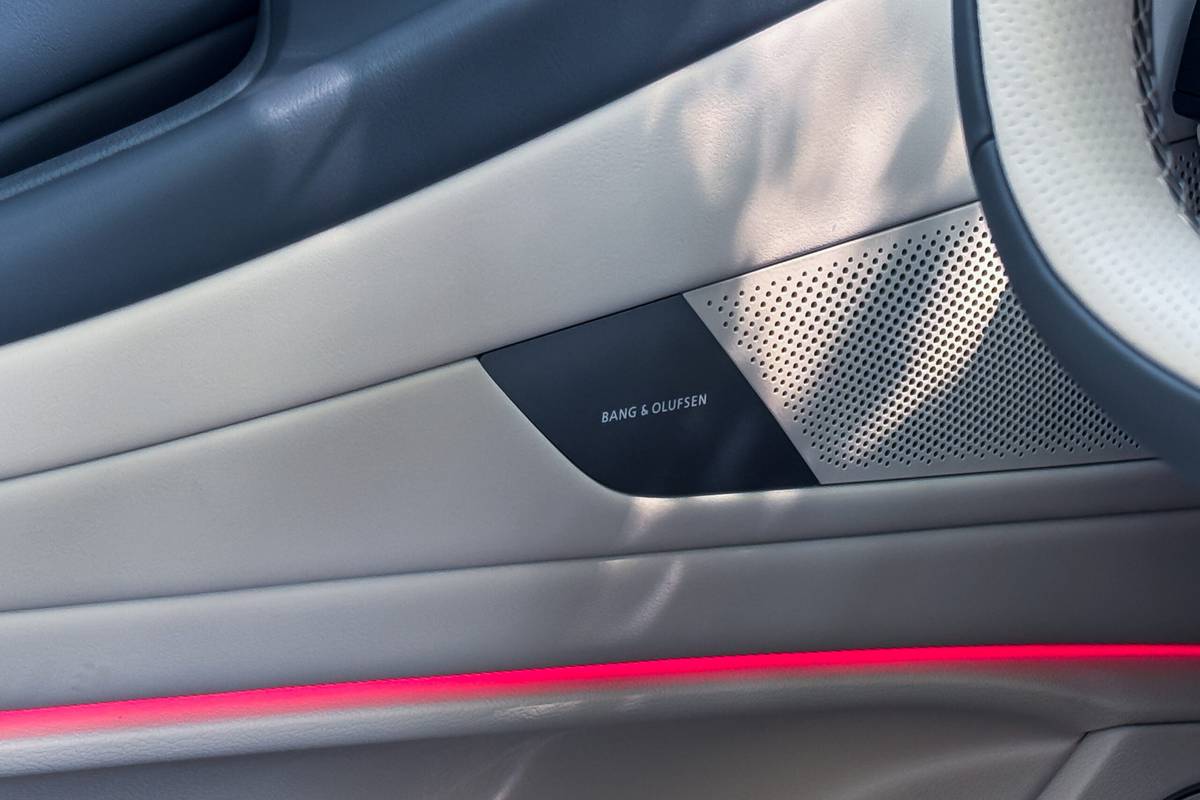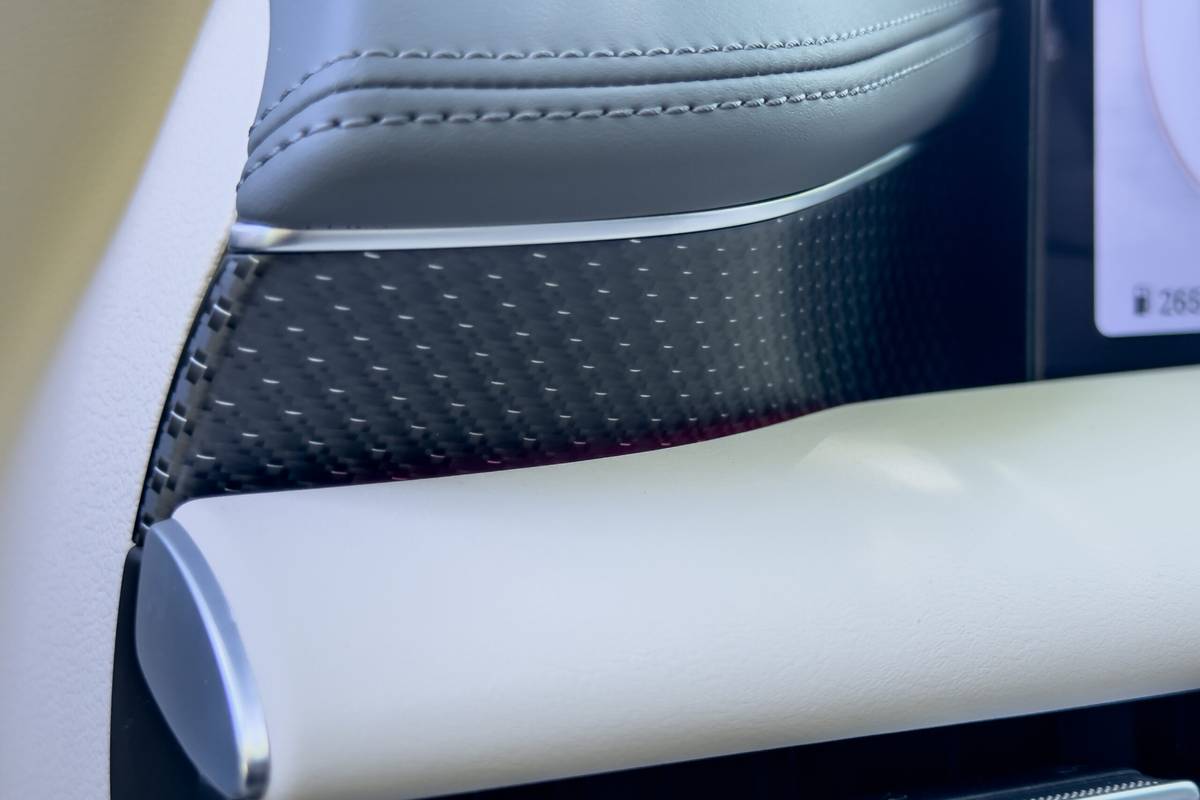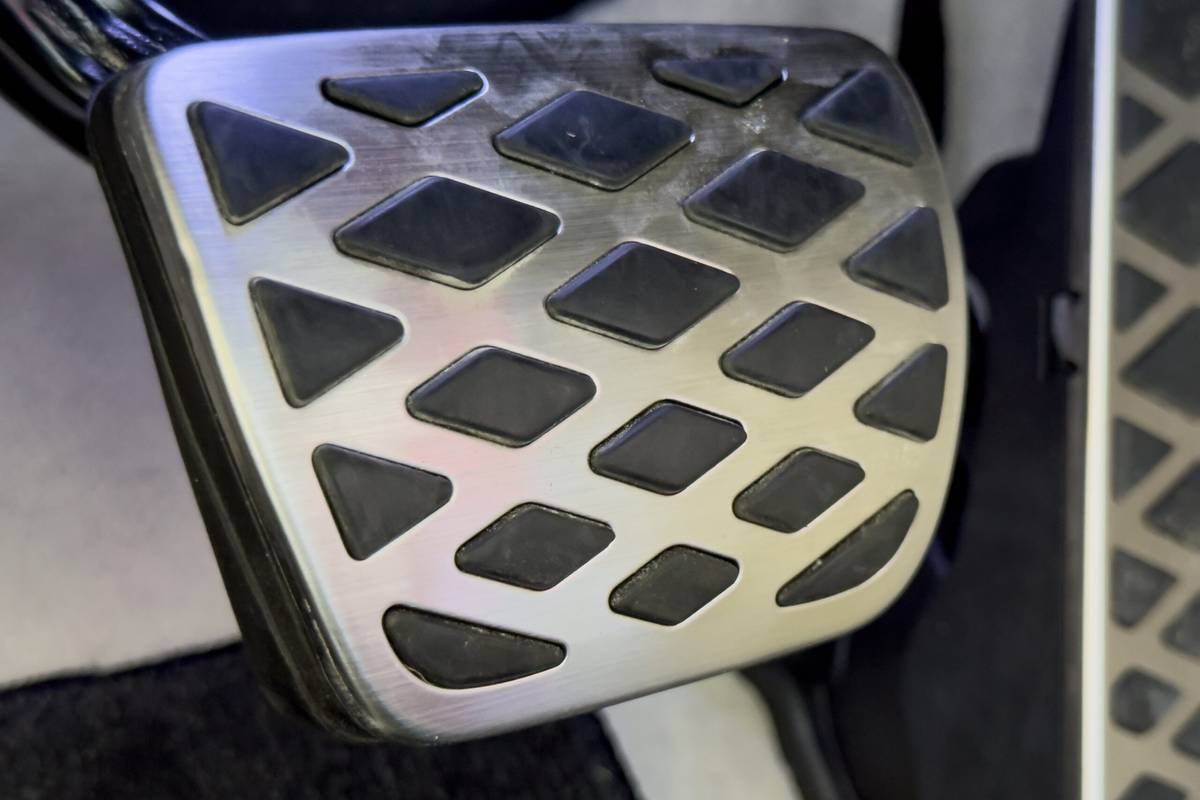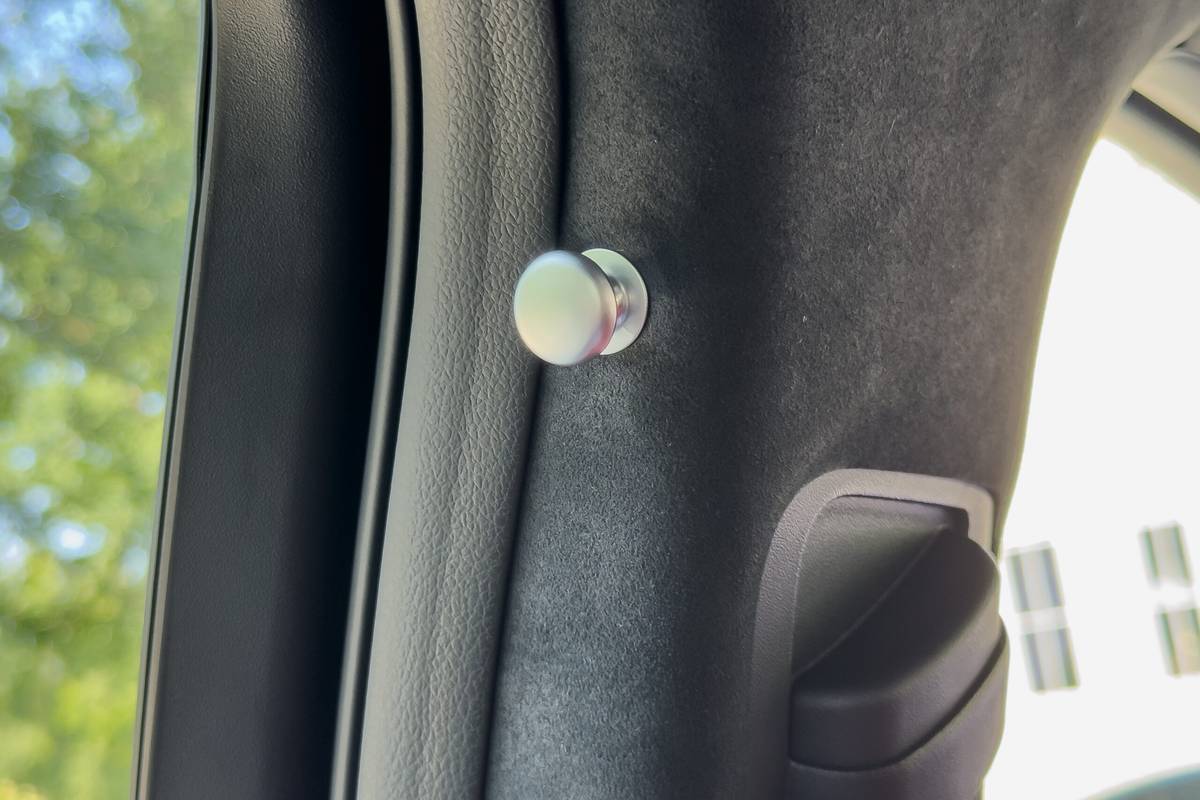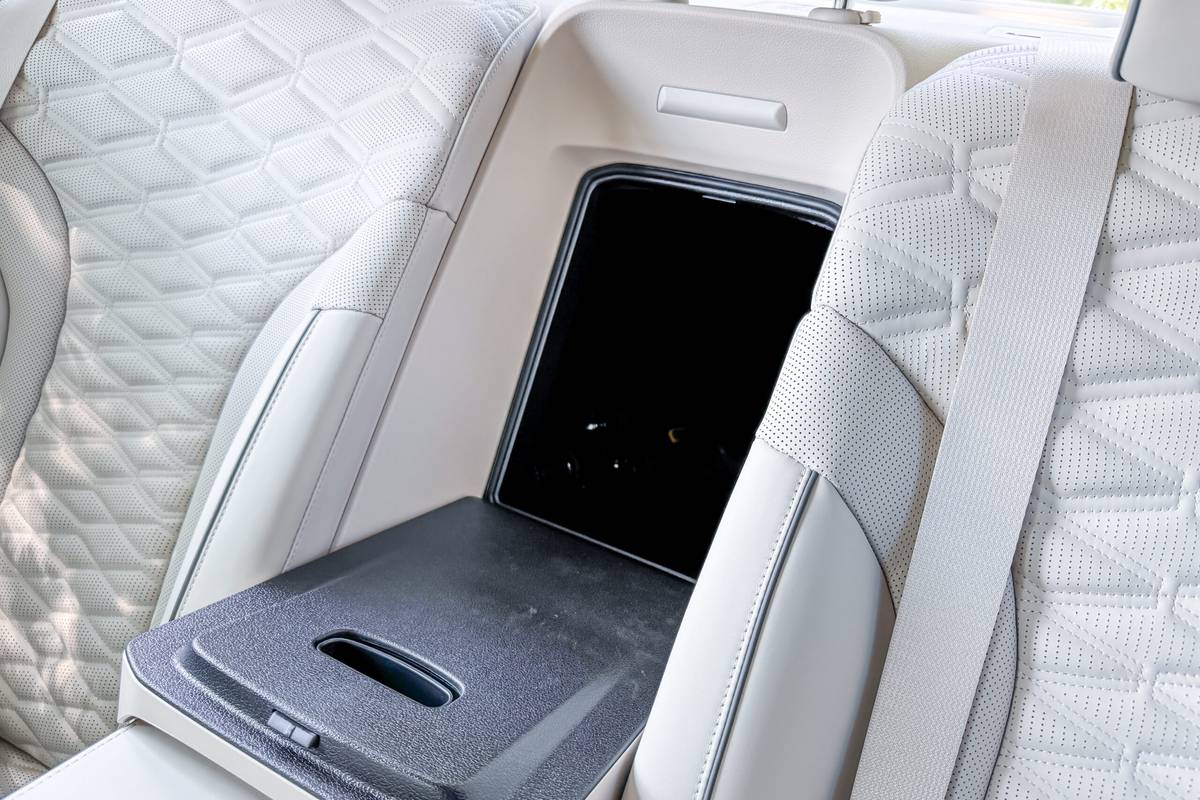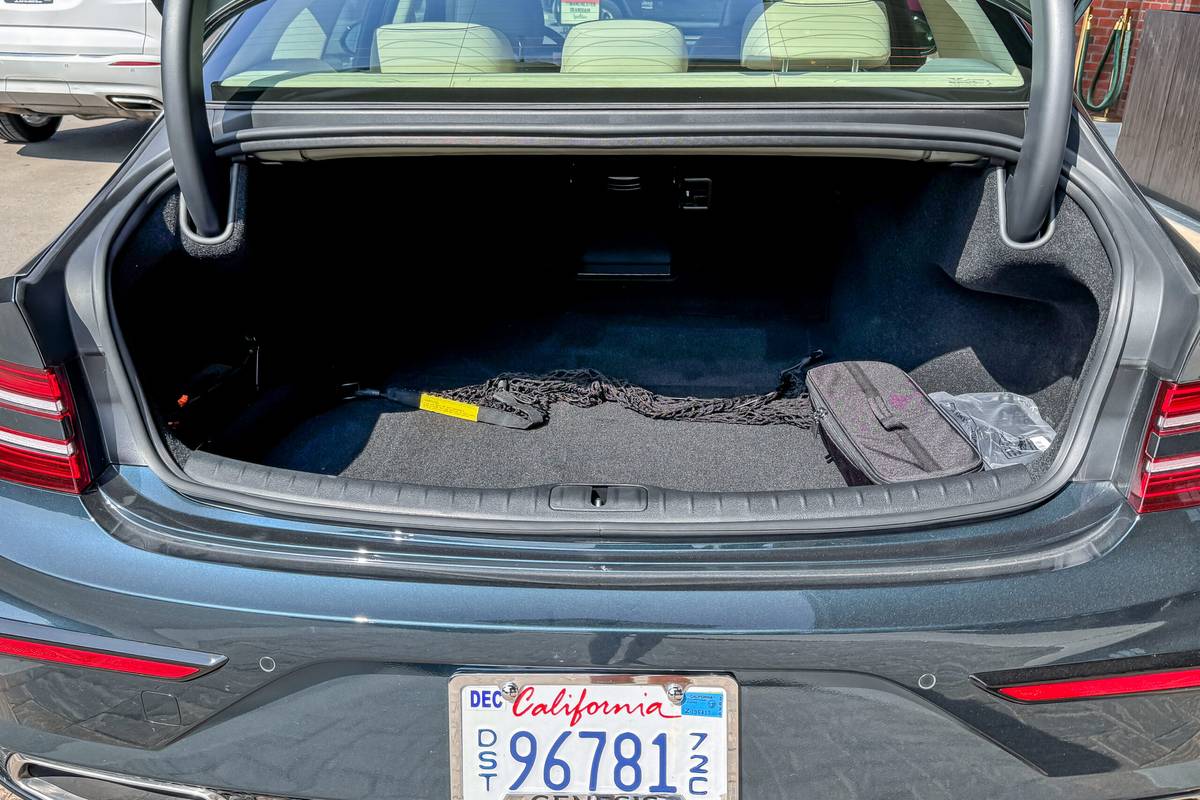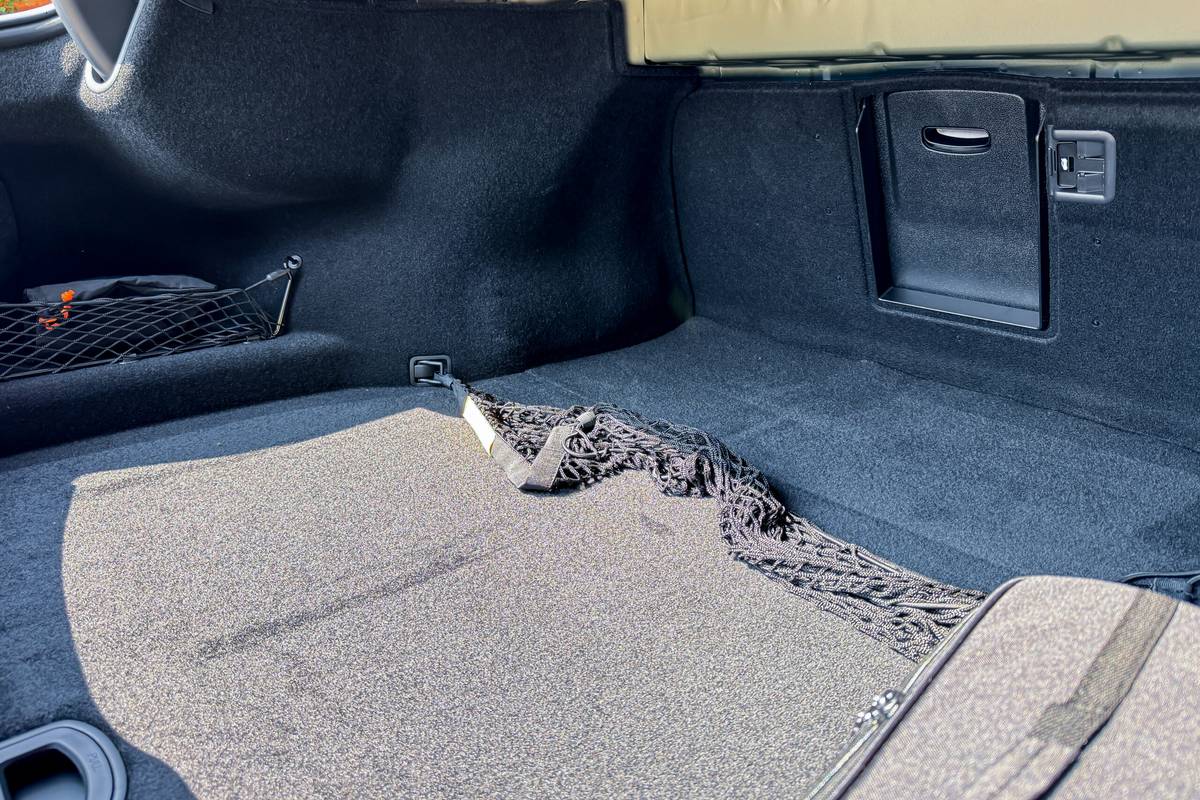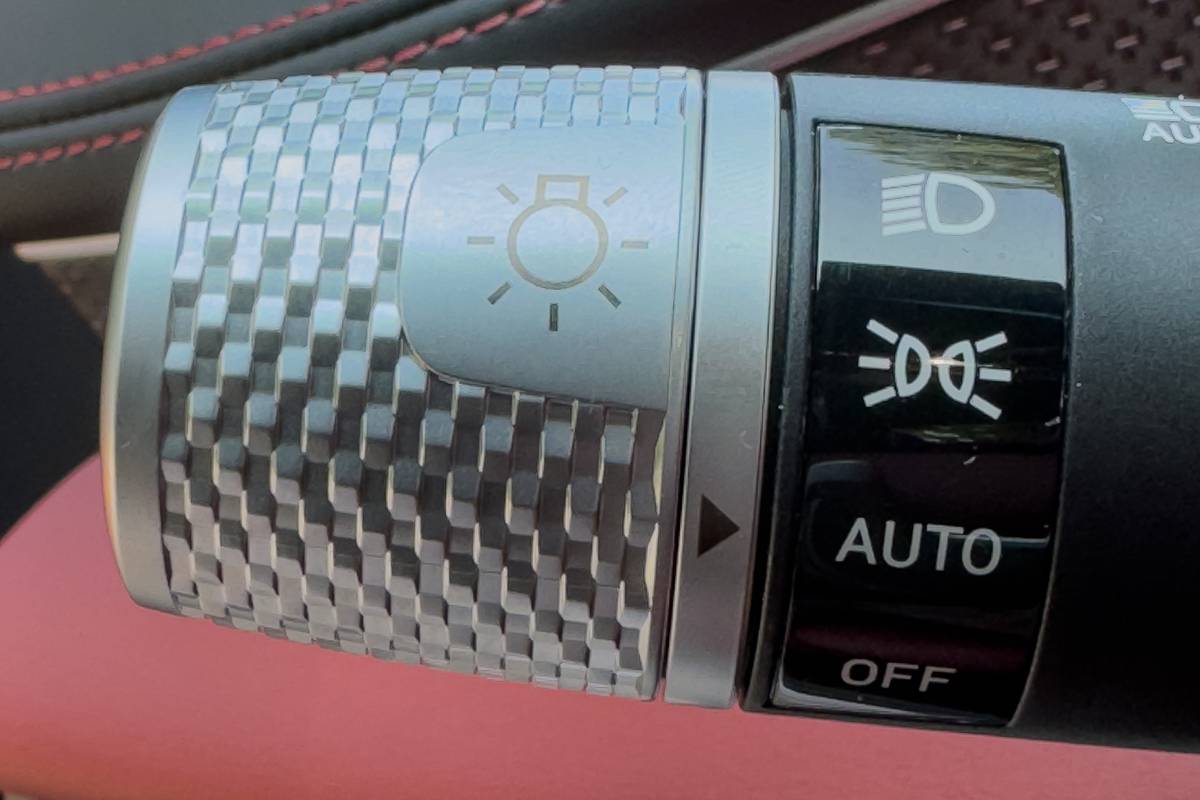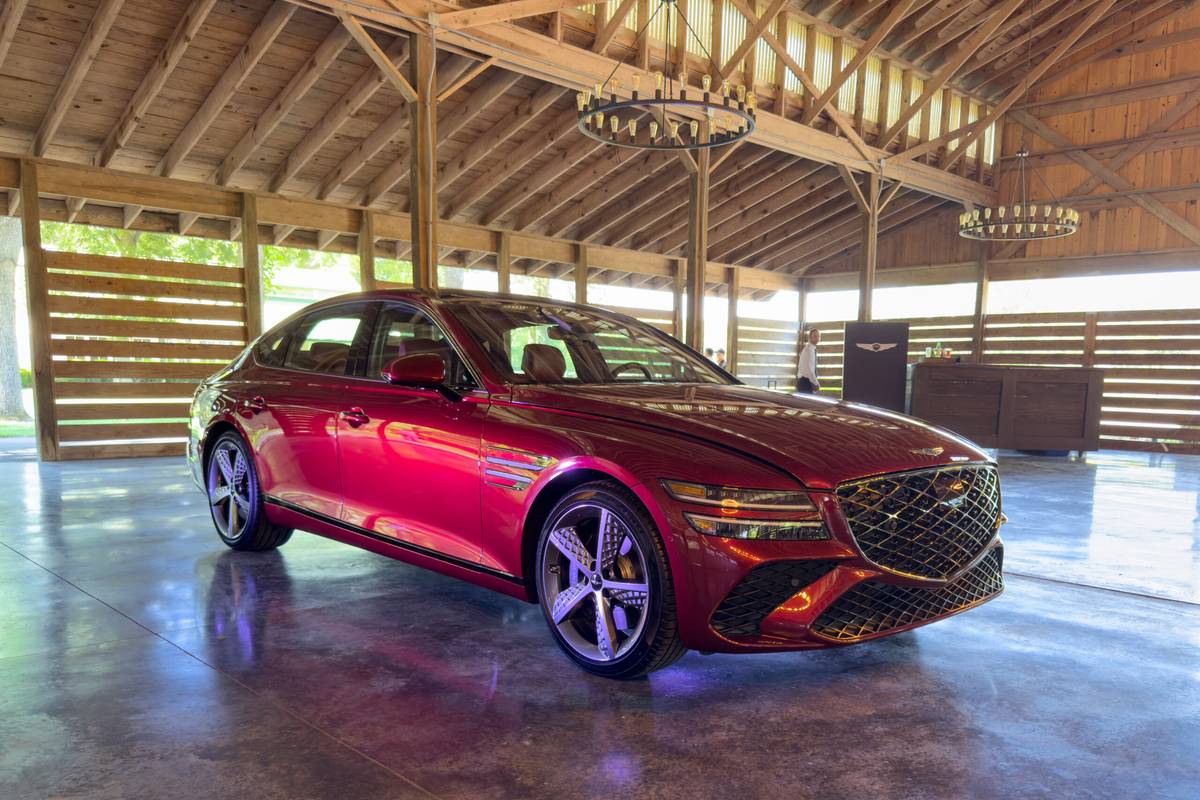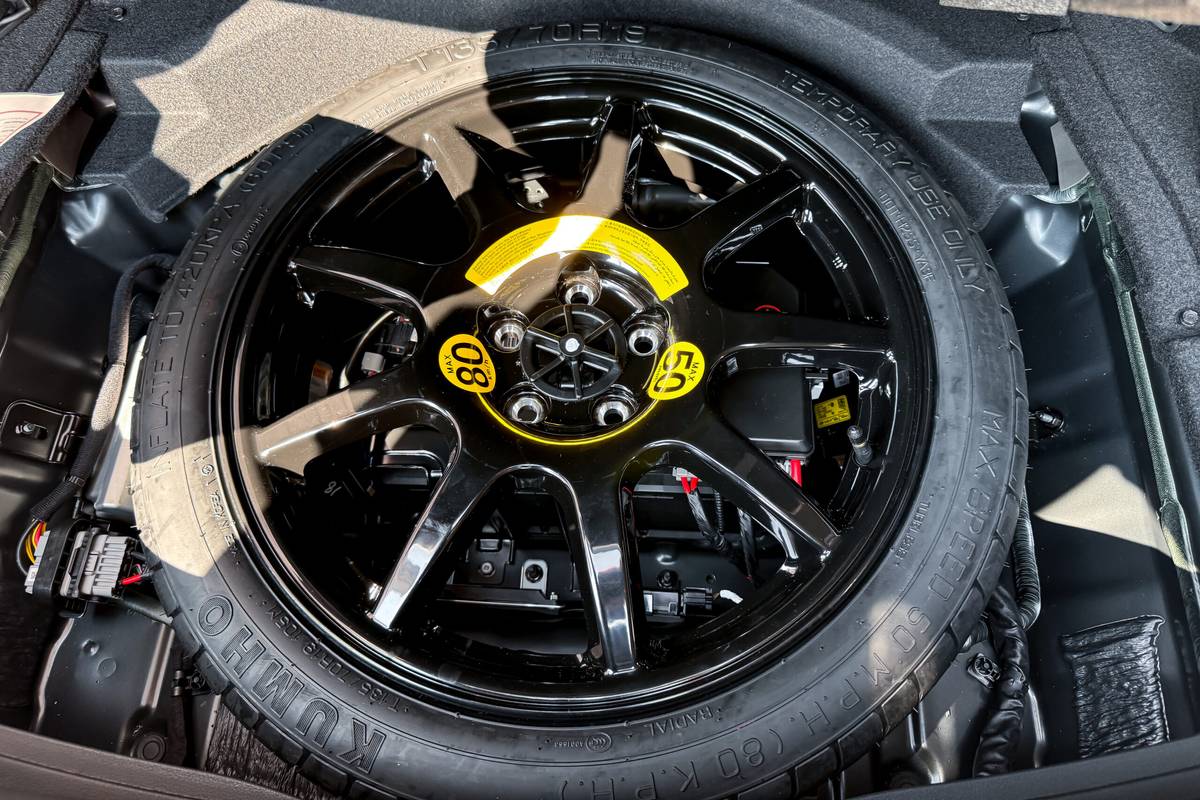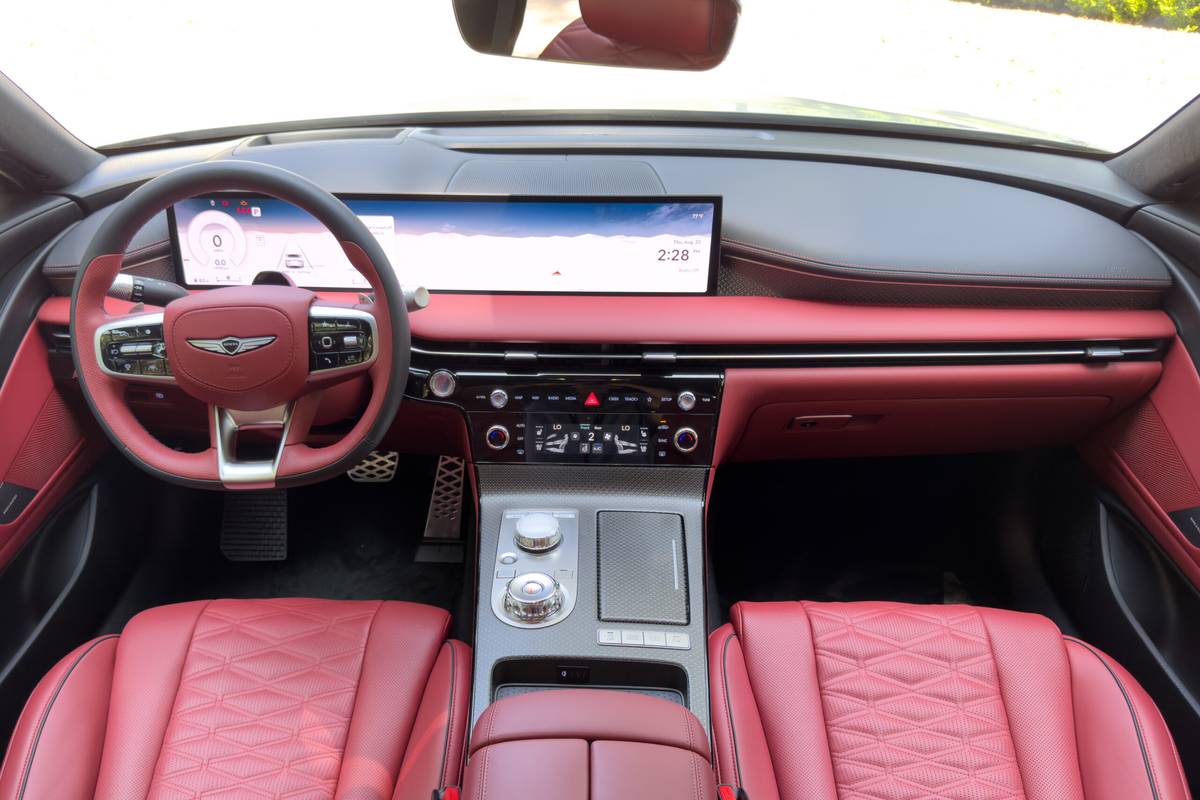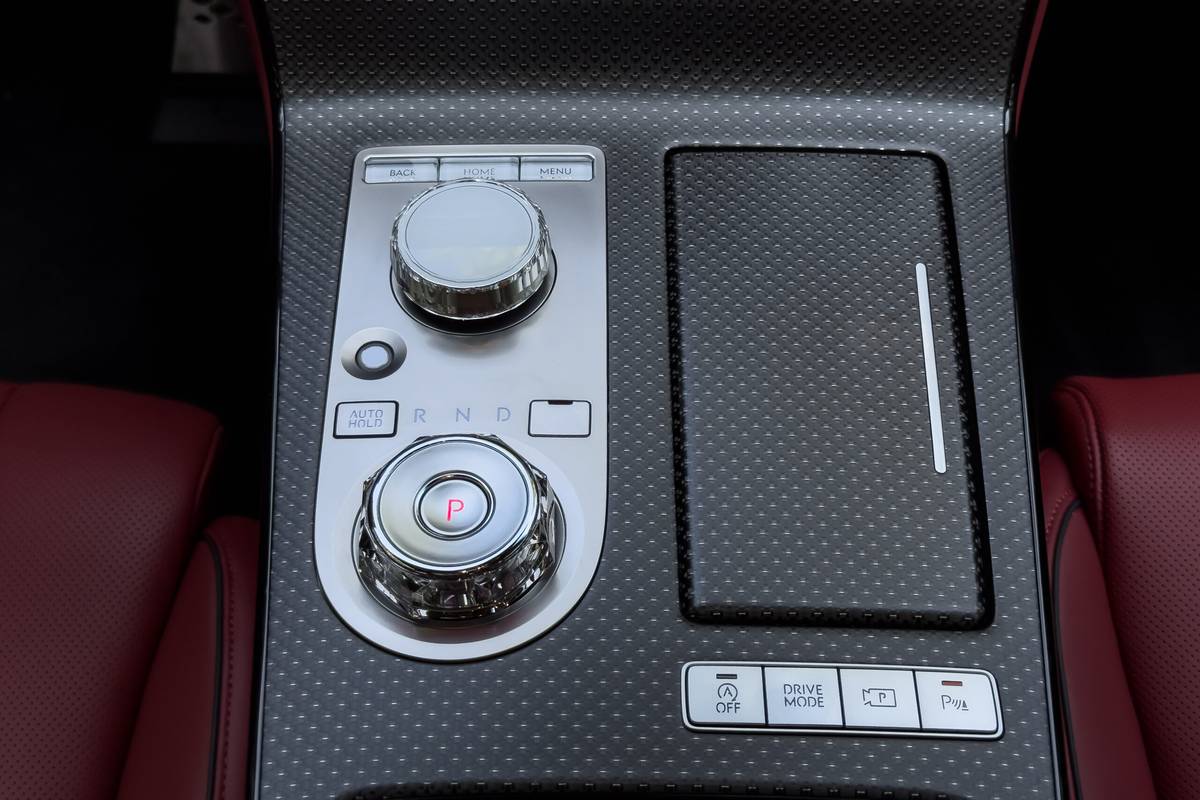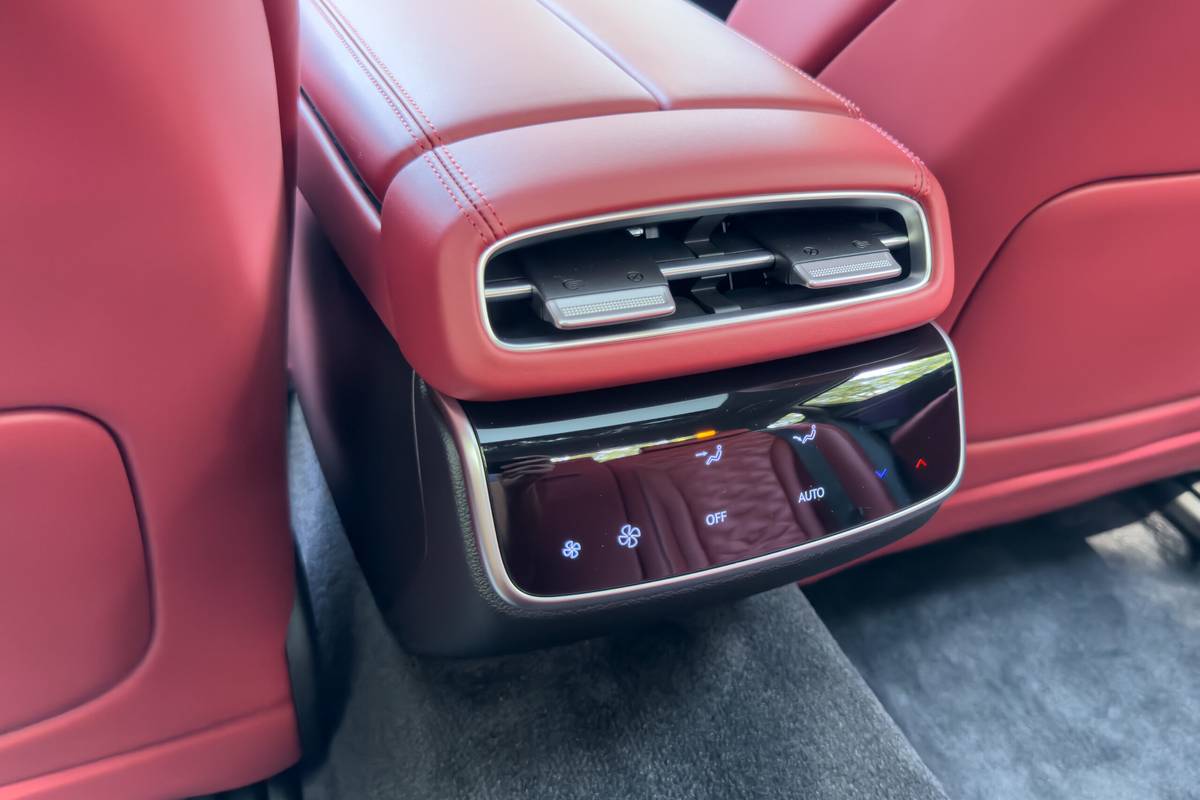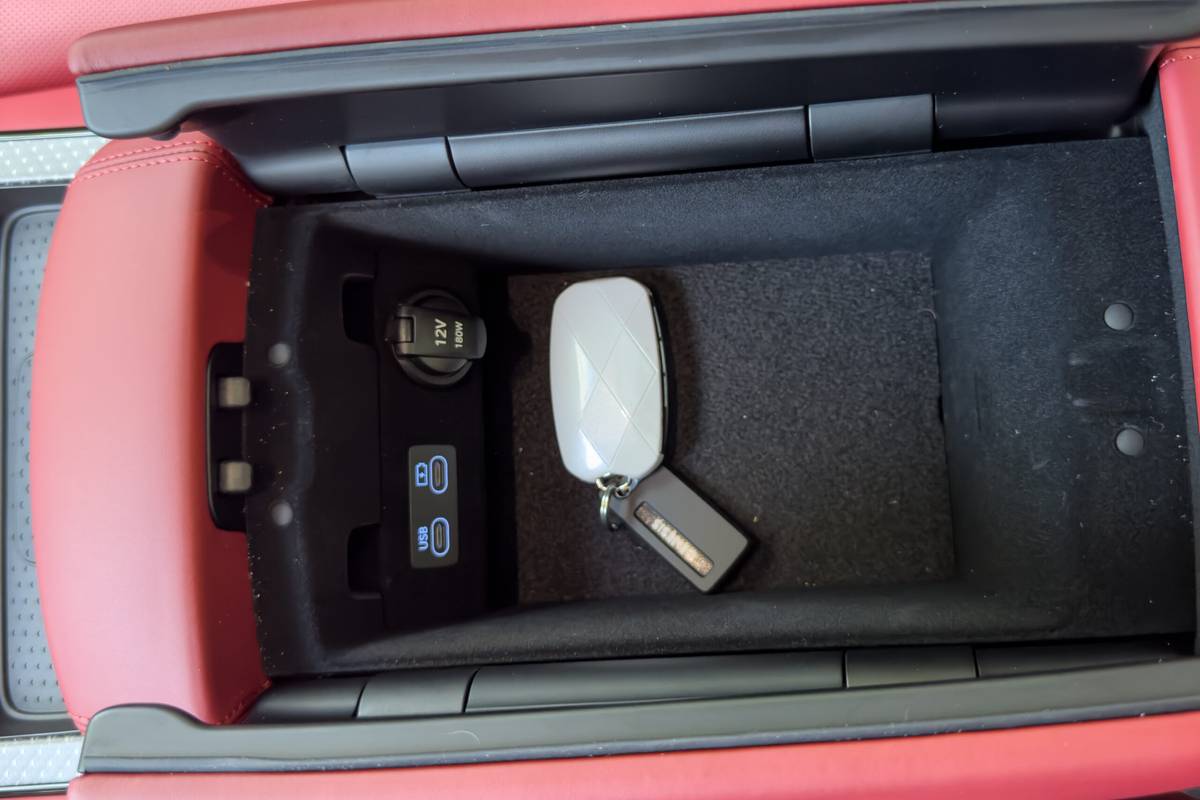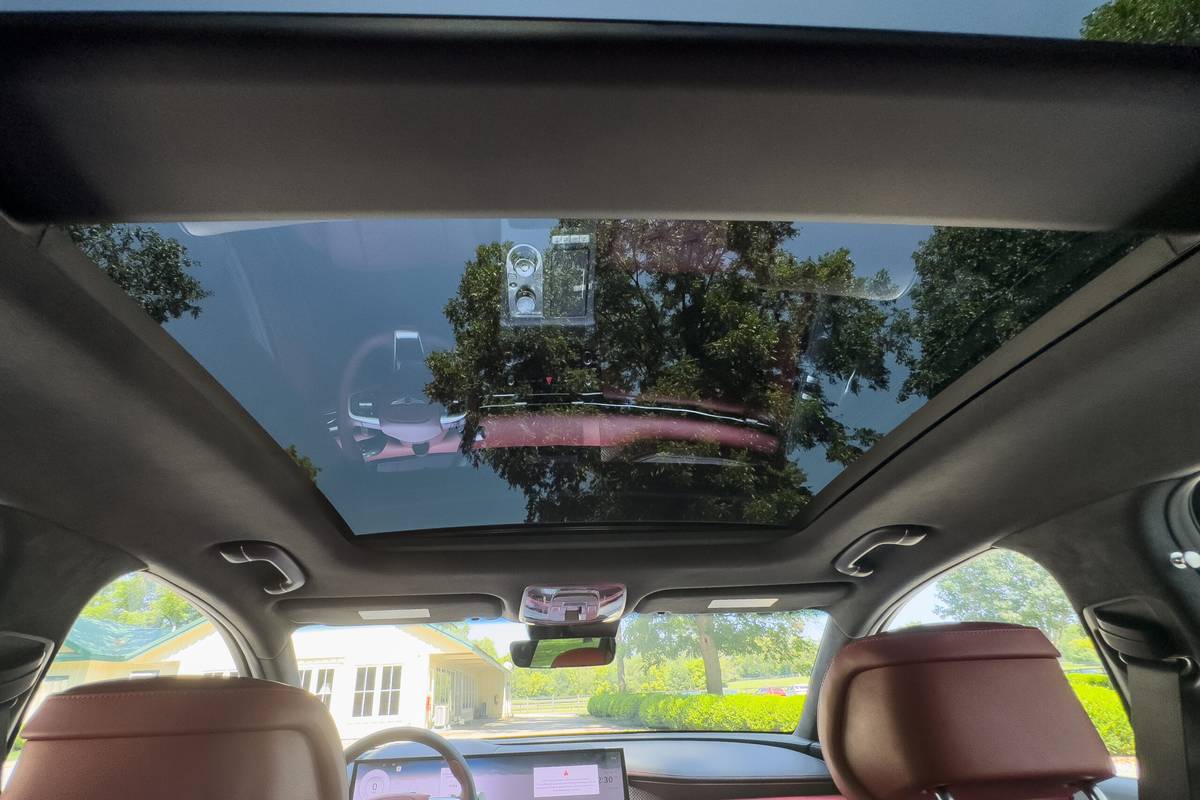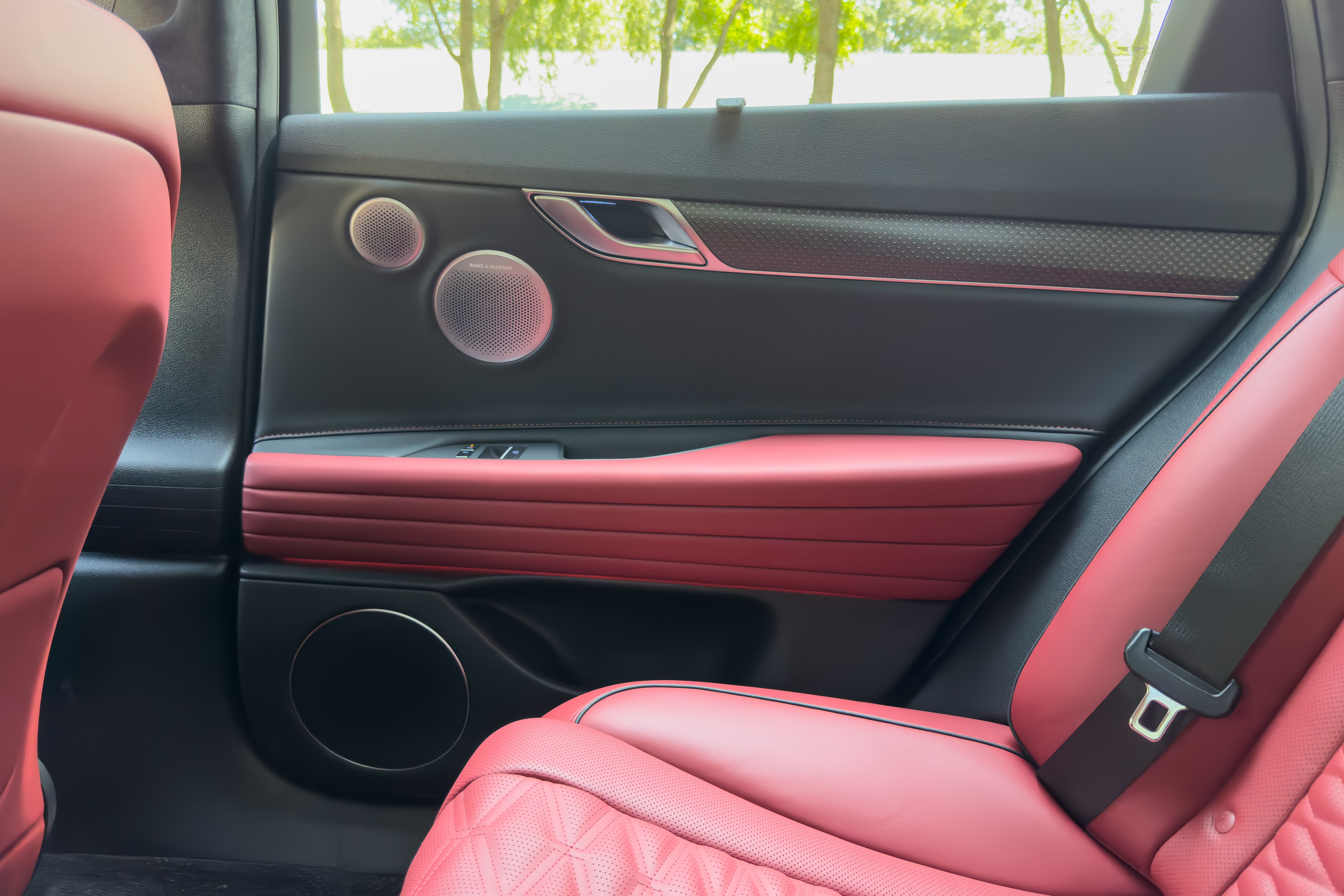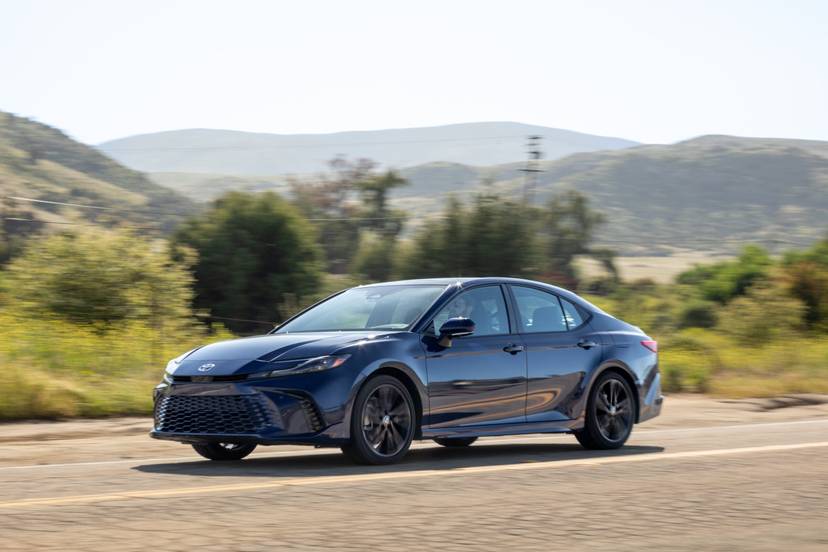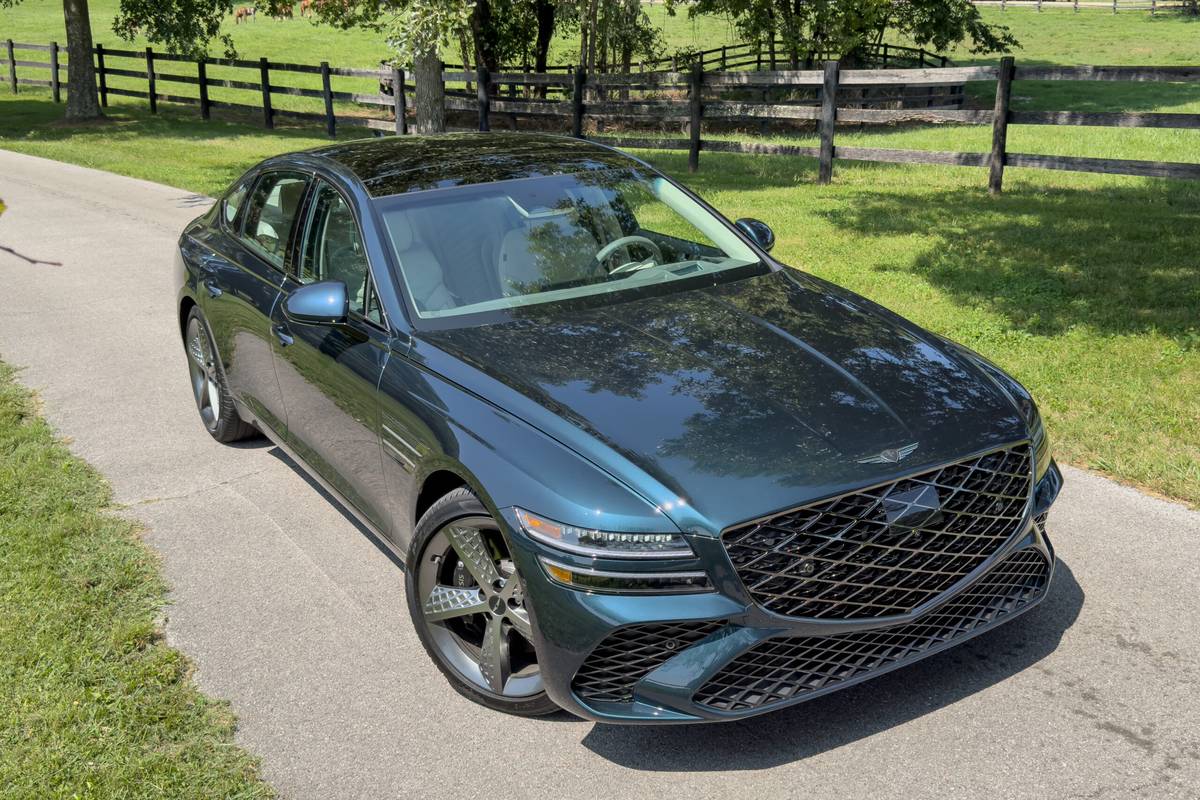
The verdict: A mild update brings a humongous screen to the 2025 Genesis G80, but it’s done in a way that truly enhances the experience rather than being a polarizing addition like some big screens.
Versus the competition: Even at a higher price than before, the mildly updated G80 luxury sedan has what it takes to be in the same conversation with luxury staples in the class.
There’s almost a sense of relief when you sit inside the 2025 Genesis G80 luxury sedan — or rather, I let out a sigh of relief because it felt so right and comfortable to be driving a proper luxury car versus a touchscreen with wheels. That’s not to say the 2025 G80 isn’t contemporary; one of its most significant changes is a massive screen that houses both the instrument panel and center touchscreen in one continuous display, and, yes, there are touch-sensitive controls that replace hard buttons. But the G80’s interior, like in previous years, showcases wonderful attention to detail with a “wow” factor that simply doesn’t exist in competitors.
For 2025, Genesis listened to customer feedback, adding controls to increase user-friendliness. For this review, I drove a top 3.5T Sport Prestige with all-wheel drive priced at $78,250 (including destination fee) at a media introduction event. (Per our ethics policy, Cars.com pays for its own airfare and lodging when attending such manufacturer-sponsored events.)
Related: 2025 Genesis G80 Gets Minor Face-Lift, Priced From $58,350
27 Inches of Screen
The 2025’s new 27-inch screen is a very well-executed design for a couple of reasons. For one, Genesis listened to consumers about how they wanted volume and tuning knobs; it has replaced scroll wheels previously integrated into the center console ahead of the media controller. Proper knobs have been added up high, where they’re most familiar, and physical dials remain for driver and passenger climate temperatures. What Genesis has not done is lump climate or vehicle controls into the screen. There are still heated and ventilated seat controls out in the open (unlike BMW, which now buries them in a touchscreen menu), though like previous G80s, they’re displayed in a touch-sensitive panel. This still presents some obstacles for usability because touch-sensitive controls don’t work as well as physical buttons, but the brand hasn’t gone all in on screens like some competitors. Controls for switching modes and media were previously hard buttons and are now touch-sensitive, so Genesis isn’t totally off the hook.
Another way the Genesis incorporates its screens in a thoughtful manner is that, for my driving position, the vitals of the car (speedometer, tachometer, information display) aren’t obstructed by the steering wheel. What helps is that the area of the screen that’s obstructed by the steering wheel — the bridge between the instrument panel and center dashboard touchscreen — doesn’t house important controls. You can fill this area with a nicely designed clockface, but it doesn’t have climate or other controls. You may ask: Who would block important controls with a steering wheel? For one, corporate cousin Kia’s engineers, for example, in the EV9; Mercedes also pulls this move with the optional Hyperscreen on its all-electric EQE.
Big isn’t the only benefit of the screen. The screen’s user interface and customization are very user-friendly. There are many options and configurations from which to choose, and it’s easy to find what you want without digging through a bunch of menus. For example, a digital version of the G80 is represented in a few places on the screen, and you can change its color to match the exterior color of the car you bought. Within these menus, you can also do the following and so much more:
- Change the screen’s displayed text size
- Change the screen’s layout design
- Change the clock design of the screen when it’s off
- Add a clock display between the instrument panel and center touchscreen
- Customize the favorite buttons on the steering wheel and center dashboard for favorite commands (like Apple CarPlay, Android Auto or driver-assistance settings)
- Customize brake-pedal responsiveness
Wireless Apple CarPlay and Android Auto is standard and also new, making the G80 one of the last cars in its class to get wireless capability for these interfaces. The wireless charging pad has been moved to just ahead of the front center armrest, and it features a slick little pass-through to the storage areas for wires in case you need to plug in for power or wired smartphone mirroring.
Improved Ride?
Most of what’s under the hood is carried over for 2025, though there are minor changes to improve noise, vibration and harshness characteristics. I observed a more refined, isolated ride than in the previous G80, though I hesitate to call it a confirmed observation because I was driving on different roads than the previous 2022 G80 3.5T Sport I drove. But tire impacts felt better-absorbed, and the cabin was a touch more hushed than I recall. Sport Prestige trim levels, both four-cylinder 2.5T and V-6 3.5T with 20-inch wheels, use a new Pirelli tire with foam inserts to reduce noise, which is what I sampled. There are also minor changes to the suspension, doors and transmission tunnel to improve NVH characteristics. Genesis’ manager of product planning, Loren Wong, confirmed that the shock absorbers have different valving and tuning, though specifics of what changed wasn’t shared.
Regardless, however, the G80 Sport Prestige is a joy to drive because of how well it isolates the driver from the road — both from noise and road feel — and also how confidently it drives with the planted feeling you get from a low-slung, ground-hugging sedan. The Sport Prestige 3.5T, comes with a rear-steer system that helps low-speed maneuverability (it takes the turning diameter from 38.1 to 36.2 feet), and it’s a noticeable assist in parking situations.
Previously, I felt the G80 perfectly split the difference between the sporty G70 compact sedan and cushy G90 full-size sedan, but this G80 felt like it leaned more toward the G90’s refinement, and I appreciated that. I found little reward in hustling the G80 through corners (though it can do it), and it’s certainly more appropriate as a cruiser.
What Hasn’t Changed
Interior dimensions remain unchanged for 2025, so the front seat’s tight headroom remains. I’m 6 feet tall, and I had to slam the seat to its lowest position to get a comfortable amount of headroom — basically, to keep the top of my hair from brushing the top of the interior. Many may want a more relaxed seating position, which cars like the BMW 5 Series and Audi A6 deliver, versus the G80 that has a more raked windshield and sleek appearance that affects front-seat headroom. I had more headroom in the backseat, however, perhaps because of the head cutouts in the ceiling that give extra breathing room.
The G80’s fuel economy isn’t a strong suit because the V-6-powered G80 has a 19 mpg combined EPA rating, while the four-cylinder is 24 mpg, but Genesis says it’s working on gasoline-electric hybrid powertrains for future vehicles, and more details will be communicated soon. I wouldn’t expect anything to come to a showroom soon, however, as production could be years away.
What About the Electrified G80?
Genesis hasn’t officially released timing or information details on the U.S. refresh of the Electrified G80, but I’m looking forward to what’s coming because the Electrified G80 was previously my favorite version of the G80 for its smoothness and near-silent acceleration. Genesis spokesman Jarred Pellat said at the introduction that the Electrified G80 isn’t far behind and to look at what was announced in South Korea for hints at what might come to the U.S, which is an extended-wheelbase Electrified G80 with more legroom that should address some of the backseat concerns of the G80 while improving the ride quality even further, plus a larger battery that could extend the driving range more than the EPA-rated 282 miles of the current Electrified G80.
We cannot generate a video preview.
Not as Affordable as It Used to Be
The starting price for an AWD G80 (the only configuration available today) has increased $6,455 from when it was redesigned for the 2021 model year to today’s starting price of $58,350 for a 2.5T. It’s a tough cost to swallow considering how the updates so far have only been light refreshes and not a complete redesign. But even at $60,000, the Genesis has a lot of appeal versus traditional luxury competitors like the AWD BMW 530i, Audi A6 and Mercedes-Benz E350, which start right at or a little above that mark. One thing’s for sure: Even with a price tag approaching $80,000, as was the case for the 3.5T Sport Prestige I drove, that’s not a stretch of what you’d be OK spending considering how executive the G80 makes you feel behind the wheel.
More From Cars.com:
- How Do Car Seats Fit in a 2022 Genesis G80?
- 2021 Genesis G80: 5 Things We Like (and 4 Not So Much)
- 2021 Genesis G80 Review: Nipping at the Germans’ Heels
- 2023 Genesis Electrified G80: How Long Did It Take to Fast-Charge?
- Shop for a New Genesis G80
Cars.com’s Editorial department is your source for automotive news and reviews. In line with Cars.com’s long-standing ethics policy, editors and reviewers don’t accept gifts or free trips from automakers. The Editorial department is independent of Cars.com’s advertising, sales and sponsored content departments.












